









In putting together this edition of Headliner, we had the immense pleasure of speaking at length with some of the most accomplished and influential figures from across the musical spectrum. From technical experts in the live and studio worlds, through to artists and creators who have inspired – and continue to do so – all manner of fellow writers and musicians, their insights and opinions on the state of their respective industries are invaluable.
Where better to start than that with our cover star, UK singer songwriter CHINCHILLA. Hers is a story that speaks of the multi-faceted, everchanging nature of today’s music market. From a viral TikTok moment to embracing life as a fully independent artist, she has already experienced huge success and navigated some of the most challenging aspects facing new artists today. It’s a fascinating journey so far and one will no doubt be of interest to anyone looking to break into the music business.
On the flipside, Martin Fry, lead singer with iconic Sheffield band ABC, joins us for a chat about the 40th anniversary of the band’s legendary debut album The Lexicon of Love His four decades have given him a unique perspective on the longevity of his band and many of his peers, as well as the art of how to adapt with an industry that refuses to stand still.
Elsewhere, we sat down with the president of Augspurger Monitors for an in-depth conversation about how
Daniel Gumble Head of Contenthis products have not only helped shape the sound of hip-hop as we know it, but how the art of studio design and monitoring processes have evolved over the past three decades.
On the live front, veteran FOH engineer and audio system designer Simon Honywill joined us to talk about how his long-standing relationship with Martin Audio has helped him to express his creativity through sound, as well as his ongoing connection with the Glastonbury Festival. His audio system design on the Pyramid Stage has become so revered that the festival has granted him permanent infrastructure with which to cable the stage. It’s another engrossing story that provides no end of behind-the-scenes access to the most beloved festival on earth.
Of course, there’s plenty more to get stuck into, as we delve into the latest tech and trends from across the realm of music, audio, and beyond.
Enjoy.






















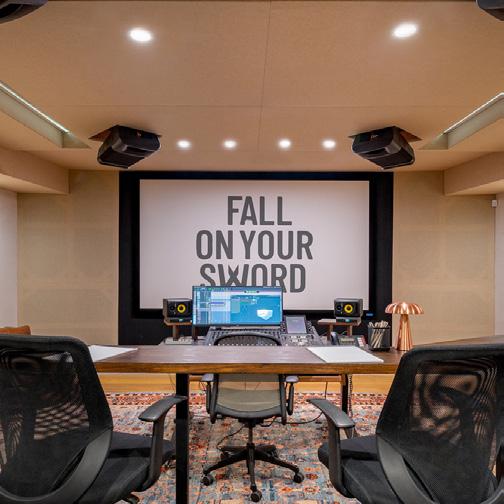


New York’s Rachel Bochner is a Gen-Z pop artist who could not wear her heart more proudly on her sleeve if she tried. With songs like Be Happier and Ghosted My Therapist , she keeps the mental health conversation open, while somehow also delivering absolute bops. She chats to Headliner about why bouncy castles and cotton candy felt appropriate for the video of her new single If I’m Gonna Be Sad (I Might As Well Look Hot Doing It), and why we should all get very excited for the upcoming EP it’s teasing.
Describing her music as “the soundtrack to the coming of age movie you wish you were the main character of,” Bochner’s first experience of the music industry was interning for a record label, at one point seeing that as her path. But thankfully, she crossed over to releasing her progressive indie-pop music during the first lockdown of 2020. Diligently releasing single after single, we now have a bona fide rising star three years later.
Rising star she may be, that doesn’t change the fact that New York is a
very, very expensive city to live in for musicians, or anyone who wasn’t born into wealth, for that matter. “I am definitely finding that it’s hard to live in New York because it’s so expensive,” Bochner says (she’s originally from the much leafier Richmond, Virginia). “But you make it work, you do all of your side hustles and figure it out. I love New York, I love the energy that it has and the people that I’ve met while living here. So I’ll do everything in my power to be able to stay here.”
On growing up with music always around her, she says, “I grew up with four sisters. We loved putting on shows and singing along to our favourite Disney movies and all that. I was especially the one to be humming and singing alone in my room and disrupting everybody’s homework.”
Something that helped Bochner no end with musical performance was “musical theatre, which I loved. I think that’s when I realised I loved being on stage. It was a great way to dip my toes into being in front of people and putting myself out there. I also loved going to see Broadway shows; we lived close enough to be able to do that on a whim. So seeing these amazingly talented people performing on stage, that was really inspiring for me.”
Bochner’s music is certainly reflective of the pop music soundscape that has been forever changed by Billie Eilish — a vocal delivery that’s both soft and blunt at the same time, unapologetically direct lyrics, and a deft combination of instrumentation and pop electronics. That’s not to say she’s any kind of an Eilish copyand-paste job; her lyrics and song content are both vital and unique, an impressive voice both in terms of singing and what she is bringing to the table with her songwriting.
Bochner agrees that pop music continues to be in a very exciting place. The advent of social media and streaming has, in one positive at least, meant that pop music is no longer a tiny circle of major label acts like Taylor Swift and Katy Perry. You only need to look at the careers of Carly Rae Jepsen and Charli XCX as examples of pop artists who regularly tour and have dedicated fan bases, but aren’t necessarily topping the mainstream charts.
“When people ask what music I make, I do say pop music,” Bochner says. “I’m not ashamed of that. I do listen to so much different music and a lot of alternative music, but I am a pop girl at my core. In the last handful of years you can go in quite a few directions and still be under the umbrella of pop. I’ve tried out more acoustic pop, electro-pop and my new EP is leaning towards pop-rock. I have always loved Taylor Swift, and I’ve been a huge Lana Del Rey fan since her first album and after I saw her infamous SNL performance. I’m really excited for the new Baby Queen album that’s coming out, and the Maisie Peters album that just came out is so good.”
Bochner had started writing and coproducing her solo material prior to 2020, but it just so happened that her
debut single release, Purple, coincided with the first pandemic lockdown. This trial by fire saw her first release strategy being completely digital, which of course has its pros and cons.
“We wrote Purple the weekend before lockdown,” she recalls. “We knew COVID was a thing, but it wasn’t impacting travel in New York yet. Sasha Campbell and Nick Blaze, who I write with a lot, came to visit me, and we went to Baby Boy Blue’s studio in New Jersey. We wrote the song and basically finished it in one day. And then a couple of days later, everything was shut down. So that was our last taste of freedom! So the entire promotion for the song was online, but we did make the song together in person.”
Mental health forms a very central theme in Bochner’s lyrics, but what is interesting about her own approach to tackling this very personal but equally vital subject is that she is very direct with her lyrics — in years gone by, musicians might reveal their darkest feelings by wrapping them up in metaphors and double meanings. Not Bochner. With song titles like Ghosted My Therapist and Drunk Crier, she lyrically wears her heart on her sleeve.
“It’s funny because when I’m talking to a friend or even my therapist, I find it hard to name what I’m feeling or going through,” she says, with more earnest honesty. “But when it comes to writing a song about it, I find it much easier to express myself that way. Songwriting became an outlet for the things I couldn’t articulate to the people around me. I think that’s why I’m so blunt in my writing. As much as I love a metaphor or a visual line, this approach is what I need as an outlet for my emotions and feelings.”

“I AM A POP GIRL AT MY CORE. I’M NOT ASHAMED OF THAT.”Credit: Carina Allen
It’s fairly logical then, that Bochner generally feels very positive about mental health becoming a much more open discussion in both public and this relatively new openness in artist’s lyrics. “Obviously the conversation is really important. And it feels so valuable to me to put out music that makes people feel represented and validated. It’s not a case of me releasing a song and saying, ‘Here’s the issue and here’s how to fix it.’ I think it’s being able to relate to lyrics and the comfort in knowing you’re not alone. I think that is so meaningful for people.”
As we gear up for her new EP, Bochner has hit us with three fantastic singles: Sucker Punch, If I’m Gonna Look Sad (I Might As Well Look Hot Doing It), and Here For The Drama. The second of those marked her second single release with a gloriously over-the-top music video that features co-writer Tiger Darrow. The pair get to live their very best lives in the video, at various points surrounded by a mountain of cotton candy and enjoying a bouncy castle.
“I accidentally fell into directing and editing the video,” she says. “When I’m
writing songs, my mind can’t help but wander to the visual side. I originally had this concept with a mechanical bull, but I couldn’t find a bar with one that either existed or would let us film there within a 300-mile radius of New York! I didn’t have an Ariana Grande budget, so we had to make something else work, and I had the thought of a bouncy castle. We had a small crew of my friends, it was so fun to film and stupid in the best way.”
The song, like the video, is a wonderful and relatable contradiction in that it’s an upbeat bop that will get your head nodding, despite the fact Bochner is singing about feeling sad. It’s a medium she’s mastering before our eyes, as also evidenced on the latest single, Here For The Drama, which opens with a high school movie-esque combination of guitar riff and a group vocals. As she’s singing about things falling apart, the verses and choruses have no right to be as anthemic and catchy as they are.

Similarly, first single Sucker Punch plays out as a breakup revenge song, but does so without any moroseness or self-importance. As she sings, “Want you to waste a couple years
on thinkin’ I’m the one / Just to wind you up / For the sucker punch,” but the groove of the driving synths and drums keeps the track tongue in cheek rather than sinister.
In case you’re somehow still not convinced on checking out her sixtrack EP that releases this August, here is Bochner’s last word on her latest body of work: “I just announced the last single. It’s called Hard To Please, and then the EP will be coming out on August 11. Then there will be two brand new songs that drop with the EP. I love all of these songs! I can’t wait for them all to be out.”
When London’s legendary RAK Studios responded to demand and went immersive, they wanted the most truthful monitors available. So they chose The Ones Smart Active Monitors, finding them unbeatable for neutrality, imaging, fatigue-free listening and consistent mix translation.

RAK now enjoys a flawlessly cohesive and scalable immersive system that’s also pinpoint accurate in level, distance and frequency response alignment, thanks to our GLM calibration software.
So, if you’re serious about going immersive – whatever your room size – explore our industry-leading solutions online. Visit www.genelec.com/immersive-hub

“Genelec have set the bar for immersive monitoring.”
Emma Townsend, RAK Studios

CHINCHILLA’s Little Girl Gone makes you want to kick a door off its hinges. The British singer talks about her rage banger going viral and becoming an anthem for the abused.
If CHINCHILLA could sum up her life right now, it would be with the ‘this is fine’ meme – (you know, the cartoon dog surrounded by flames). It’s a good fire though, and one started by TikTok. “I’m feeling stressed out of my mind,” the British singer-songwriter immediately confesses from her bedroom in North London. She’s joking – kind of.
CHINCHILLA recently split with her management and label and went fully independent. Freed up from any external control, she previewed
her new song, Little Girl Gone on Gen Z’s favourite social media platform. Her life hasn’t been the same since. The sneak preview racked up over 220M views in weeks, taking her respectable 16K following to a staggering 270K, dragging her Spotify followers up to 500K monthly listeners. Weeks later, her TikTok followers are teetering over 358.5K, the song has over 10 million streams, and her monthly Spotify listeners are over two million. By the time you read this – who knows.
“I can’t actually describe how crazy my life is at the moment,” she says, still in disbelief at the way Little Girl Gone is tearing through the internet. “It’s horrific,” she laughs. “It’s lovely, but horrific! It is very overwhelming and really surreal. I think on all DSPs it’s hit about 20 million streams. What the fuck?? It’s just crazy. It’s very hard to get the exposure as an emerging artist,” she reasons. “People always say, ‘You just need that one song,’ and I was like, ‘That’s a myth.’ It’s really hard to get that surge of followers. So I keep having moments where I’m like, ‘This isn’t actually happening, right?’ But I’m good,” she insists. “It’s all good things.”
Accent aside, her self-deprecating sense of humour (and choice use of F-bombs) immediately gives away she’s a Brit, although a lot of people assume she’s from the US. Maybe it’s her big hat energy, or the sheer bravado, Headliner suggests?
“Everyone keeps saying this,” she says, delighted. “I’m kind of loving it, I’m not gonna lie. I quite like being this enigma. But yeah, I’m totally British,” she grins.
‘The CHIN’ – as she calls herself –has been releasing music for years, but something hit different with this comeback song, which lands like a gut punch thanks to lyrics which are literally screamed into your ears: ‘Say that again, I didn’t quite hear you / Messed with the wrong bitch in the wrong era / I been at work and I got my badge of honour / Honey, I’ve changed so much since I last saw you.’
The empowering song spits out all the words CHINCHILLA has been bottling up after having it up to here with people-pleasing and being underestimated. She says it’s the most ‘me’ song she’s ever written. It’s pure, feral venom – (‘I like your blood on
my teeth just a little too much / So bite me, slap me round the face / Now I’m twisting your arm ‘til I hear it break’) – “I didn’t want the lyrics to be glamorous, I wanted to draw up chaos,” she explains.
Aside from being an absolute banger, Little Girl Gone is a call to arms. It’s a war cry for the broken, the abused, the downtrodden and those fed up of being told to smile. It’s for every woman who’s had to bite her tongue after being talked down to or underestimated, had to make an excuse after a new bruise appears, for everyone who walked away humiliated after not standing up for themself who wins a new version of the argument in their head later on. People will be screaming this in their cars at full volume after a bad day at work. Forget sad girl music, Little Girl Gone is where to go to channel your rage.
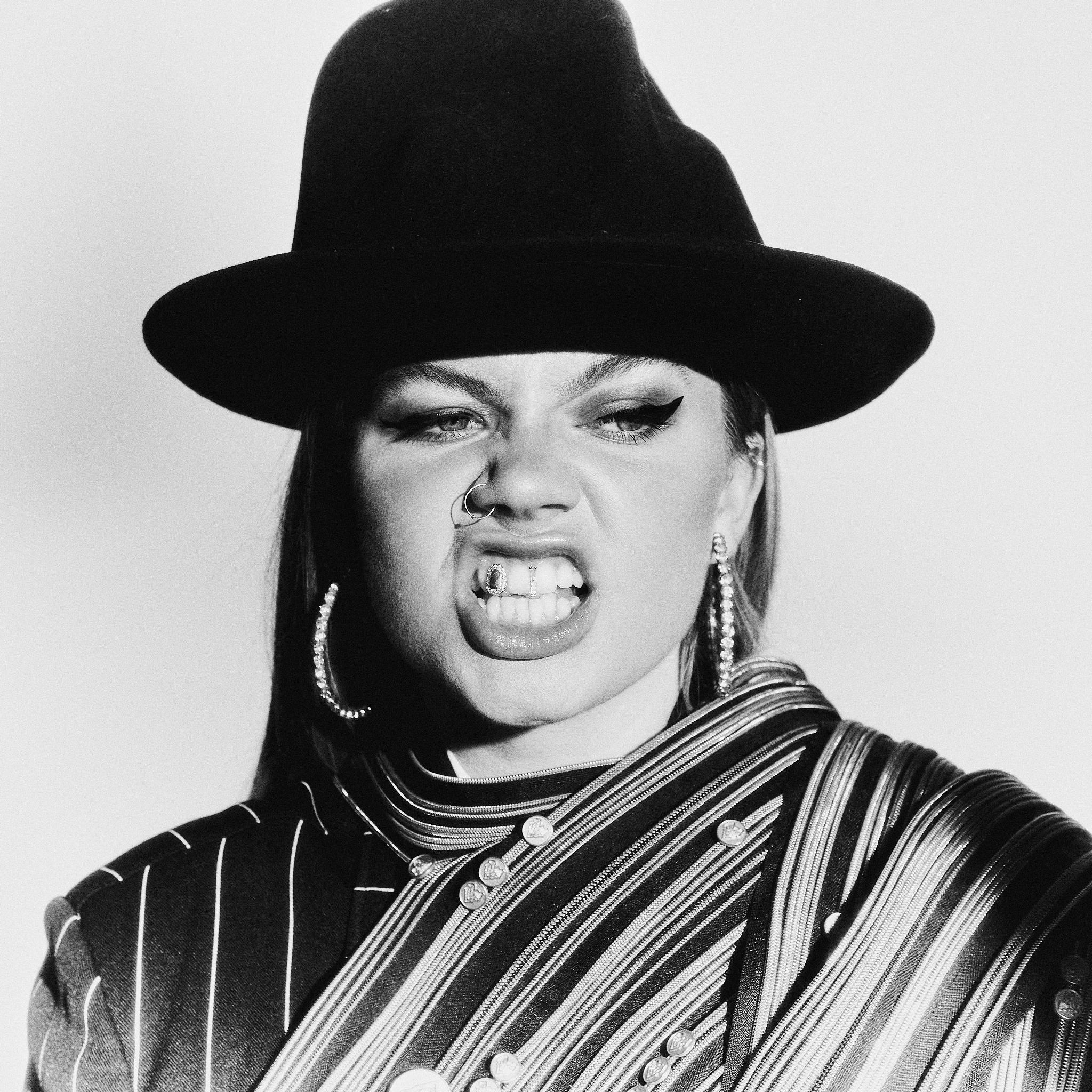
“I write a lot of songs, and every song that I’ve put out into the world, I’m obsessed with, otherwise I wouldn’t have put it out,” says CHINCHILLA. “So I feel that every song I write has the potential to do really well. Some will do better than others, but I’ve never had a response or reaction like I’ve had to this song. When I wrote it, my mind was blown and I loved it instantly. I was dancing down the street to it on the way home from the session – I don’t do that,” she stresses. “I felt like this song was a bit different. You always hope that it’s going to have the reaction that you want it to have, but it’s mind blowing what’s happened with it?” She poses this as a question rather than a statement, as if at any moment the song’s trajectory could be revealed to be an elaborate hoax.
Take a quick glance at the video’s YouTube comments and you’ll see the way the track is connecting with abuse survivors in particular, or those still trapped in unhappy situations:
“As a survivor of one who tried to erase my worth, and one who is getting his comeuppance as he sits in a cell waiting for trial, this song
makes me feel so empowered. It is my new theme song,” says the video’s top comment. Underneath it: “My sister was killed by her husband in October. Thank you for putting my rage to music. The power in this song brings tears to my eyes,” followed by: “As a survivor of MANY abusive men, this is my anthem. I began to fight back more and more,” and: “Used this song to leave my narcissistic, physically abusive partner. Thank you for giving me the strength to leave! You saved me and three kids.” And on and on it goes…
“It makes me emotional,” says CHINCHILLA, feeling the weight of the real life scenarios the song is connecting with. “I get thousands of messages every day from abused women. It’s really horrible – not receiving the messages,” she clarifies quickly – “just knowing how much it’s happening. It’s amazing that the song can help people in some way and help them feel empowered. I’ve always said that with all the music that I create, I want to spread empowerment, and I feel like that’s what the song has done. I don’t feel like it could have happened to me with a better song than this, because
this is the best song to represent me as an artist that I’ve ever put out. It feels like a real blessing that I can help people in some way, but it’s really deep. It makes me sad about how much it’s happening.
“Also, I think the reason it resonates with so many women is because we’ve all had to bite our tongue because a powerful man is making a joke that’s not funny. Fucking every woman knows that feeling – I know men do as well – but it’s so prominent in women and that shows in the way it’s connected with women having to bite their tongue. This song is talking about people-pleasing and wanting to scream. It’s like when you’ve been sitting through a conversation where you have to be really polite, and everything in your head disagrees with it, but for some reason you can’t even form the words to say to this person, ‘Fuck off.’ Then you go home thinking about everything you wanted to say and you’re getting more and more worked up and angry. That was where the song came from.”

And all this almost didn’t happen: she almost deleted TikTok after being disappointed with her lack of traction. “I literally was gonna delete my TikTok account the night that I posted the Little Girl Gone video because I was like, ‘My account’s dead. My videos aren’t getting any views anymore. The algorithm hates me. Maybe I’ll start a new account.’ I was really down and out about it but also like, ‘For fuck’s sake, I don’t want to start a new account again!’ I posted this thinking I’ll just see how it goes; I’ll check it tomorrow and if it’s dead again, then I’ll start a new account.”
The next morning the song had 8,000 views. “I was so gassed at 8,000 because I was like, ‘Yes! my account isn’t dead!’ By the end of that day it was on a million views – in under 24 hours – and I was like, ‘Hold on, what’s going on?’ That was two weeks before the song came out – thank god I already planned to release it two weeks later, because people did not want to wait around.”


TikTok exists in its own social media bubble; does CHINCHILLA worry that people will only show her love
in the app? “Yeah, definitely,” she admits. “It can happen where people love the song, but it doesn’t go as far as loving the artists. I think because I have a big image, people bought into that, which I’m so grateful for. I think people can see me as an artist, and not just for one song. There’s also a lot of personality in the song, and people resonate with that – it makes them feel authentic, raw emotions. I was worried about it getting the same kind of numbers on Spotify, but then I was also kind of confident because I really think that people would want to listen to this song. I don’t think it’s just a TikTok fad, but you never know,” she shrugs.
It isn’t. CHINCHILLA has already been contacted by fellow artists – “musicians that I love are contacting me, there’s some crazy names being thrown around and I’ve been in some really exciting sessions,” – and she’s just wrapped a headline show in London, where fans crammed into Colours Hoxton decked out in their finest hats.

And on those hats, which are as big of a statement as her all-caps name and unapologetic CHIN ethos. CHINCHILLA is not only self-styled, as an independent artist she selffunded Little Girl Gone and its asskicking music video.

“I did have a terrible year last year in the music industry,” she shares. “I split with my management, I split with my label. It was very hard to work out my path. I decided to go independent and just went into turbo. I needed to do the independent thing for a bit. I needed to do this myself. It really changed me; I made a switch that was basically, ‘I’m not doing this for the music industry’s approval anymore.’”
She explains: “I had tons of meetings with new managers last year and I felt so susceptible to being told, ‘This is a hit. This isn’t a hit. This strategy won’t work. This strategy will work. You can’t be too personable, but you can’t be too standoffish. You can’t show too much of yourself on social media, but you have to show loads of yourself on social media.’ There’s so many people – essentially strangers – that were giving their two cents on what was good and what was bad about what I was doing, and
it would get in my head and would change what I wanted to do. I needed to find that independence and that empowerment. It was a real self-growth journey. Something I’ve realised is I love being in control – I’m not gonna let that go again.”
With one eye on riding the Little Girl Gone wave, CHINCHILLA is already planning her next single, and she’s feeling the pressure.
“I feel worried about the next single because it’s almost like that thing that people always say about the second album. Big artists will say if the first album has done really well that they have this fear of the second album. I almost have that, but with the second single. I hope it lives up to it. I feel pressure in that I don’t want to disappoint anyone or let anyone down. I want to help these women in some small, tiny way and I want to release the right songs that will do that. I feel really connected with the people listening to my music in a way that I’ve never felt before.
“There is such a deep connection when people are emotionally tied to the music that you’re putting out because it cuts out the middleman of the music industry and all the
bullshit around everything. Without trying to sound really pretentious,” she cringes, “music, at the end of the day, is about connecting on an emotional level with people.”
This won’t be the last time you’ll hear from CHINCHILLA, although don’t expect her to nail down a date for the next release:
“In my independent era I want to restrict everything as little as possible for myself,” she reasons. “I’m writing loads at the moment as well, so if I’ve got songs planned and I write a song which I love and prefer, I want to be able to swap that out the week before I release something. I want to be authentic and not not restricted, and that excites me.”
In the meantime, if you’re also done taking it on the chin, whip out your earrings and add Little Girl Gone to your female rage playlist.
INSTA: @CHINCHILLA_MUSIC







The Teskey Brothers’ highly anticipated new studio album,The Winding Way has just been released – four years after their globe-conquering second LP, Run Home Slow, which followed their debut LP Half Mile Harvest. On the new record, the artistic vision of vocalist Josh Teskey and his brother, guitarist and engineer Sam Teskey is more defined than ever, with the brothers drafting in honourary Teskey Brother Eric J Dubowsky to take on production duties for this project. Halfway through the band’s world tour, Teskey joins Headliner from Oslo, while Dubowsky joins from his studio in Sydney to discuss the making of The Winding Way
Why did The Teskey Brothers decide to try something different with the production and sound for The Winding Way and work with Eric, and what did he bring to the project?
Teskey: We had our first conversations with Eric and we gelled and connected straight away, regardless of the genre [he’s known for]. I think the reasoning behind branching off from “our genre” was to explore something new to try to see what we are. It’s very dangerous to keep going down that road where you get pigeonholed really easily into “that’s your genre, that’s your category,” and we wanted to explore. Eric did an amazing job to look beyond the genres and bring the music out of us. Also it’s so easy to be like, “Josh’s voice sounds great, the first take was awesome. Let’s leave that,” and it’s really easy for me and Josh to go, “That was good. Let’s move on to the next thing.” Having Eric there really pushed us to say, “Let’s do it again.” He kept pushing us until it was better.
Dubowsky: Yes, I have worked with Flume, Odesza and The Chemical Brothers, so it looks like, “Oh my God,
they hired a techno producer to do their album!” But actually, I come from bands. The band that I had in high school was a soul band with horns. And for my first job I worked with a producer named Arif Martin and he worked with Aretha Franklin, Roberta Flack and Chaka Khan. The music that I love is the music that influenced the Teskey’s music, but that’s not what I’ve been doing for the last 10 years. This was actually stirring something; it was almost like I was falling in love with this music all over again, so I was bringing an excitement to it. I’m not a guy who is with a band every day so it was cool that they took the chance, but this is in my soul, this kind of music. And it all worked out!
A lot of thought and time went into The Winding Way compared to your past albums. How is this reflected in the sound of the finished record?
Dubowsky: There are certain albums that come along that you know makes them a special one. Everybody always says, “We put everything into it,” but it really was something that took shape in the studio, and we got to make it in a way that you don’t really get to make albums anymore. For instance, songs were changing on the fly and becoming something new. Within five minutes, a song would go from one thing to another. London Bridge is one of those. There were moments with this album that I honestly didn’t think I would get to experience, just because there are very few albums that are made like this anymore. I tend to work on a lot of music these days where one part is done in one place, one part might be done in another country, and things are sent over the internet. It’s rare that a band is all in the same room these days. I’m really excited for people to hear the rest of it because it just feels human and I think that’s what people are craving.
Teskey: Yeah, we worked you hard, didn’t we Eric? [laughs]. We wanted to do this all in the room together, and then of course that sets up a world of issues. Well, I don’t see them as issues, I think they’re beautiful things. Like the beauty of the spill of hearing the drums bleed through the vocal mic. A lot of the vocals we couldn’t rerecord because it was spilling into the piano or something like that – it all works together and I think it’s the only way to really create that beautiful live element and that feeling when you’re listening to the record. But it can be tricky when we’re in the studio, because when you want to redo the vocal, you’re like, “No, we can’t.” I think in a few cases it was amazing that we couldn’t redo them. Oceans Of Emotions, for example – Josh’s vocal take on that was the first one that he did in the room with the band. It was all live. We tried to redo it and realised we couldn’t, and that was definitely for the better because Josh had this husky, really rough voice that day and he couldn’t hit any of the high notes. But if he’d had a really high, booming vocal on that song, it wouldn’t have had the same relaxed feeling. There’s a lot of beauty to the way we recorded it; that’s the beauty of tape.
Speaking of Josh’s vocals – his husky, soulful tones are the cornerstone of the band’s sound. In terms of capturing his voice, is there much to be done when recording him, given that he will perfectly nail a take on the first try?
Dubowsky: Well, that’s the thing, you really don’t have to do anything! My methodology was like, “Stay out of the way as much as I can.” When someone’s a great singer like Josh – he is a great singer, truly one of a kind –it’s easy almost to rest on your laurels, because he’s got incredible tone and power. Everybody goes, “Oh, my God,
“WE GOT TO MAKE THE RECORD IN A WAY THAT YOU DON’T REALLY GET TO MAKE ALBUMS ANYMORE.”

you’re amazing.” So I was always just making sure that he was telling the story of the song. So yes, that take was amazing, but it was more about, “What are you saying there? Would you put emphasis on that word? Or is that a thing that you’ve got used to?”– like a riff a guitarist has or certain patterns that they follow. The main thing that I was focusing on was, “Okay, we know the vocal is going to sound amazing, so now I want to hear the story.” There were a couple of times when all I would have to say was, “What are you saying here? Who are you talking to?” and then this amazing little shift would happen. It would give me goosebumps because it was already amazing, but then it was like, “Okay, now he’s actually a storyteller here.” As far as producing a vocalist, it was a dream. But then at the same time, I was not letting myself get seduced by that amazing tone, because I still have a job! So I was definitely trying to push him as much as I could to make sure that everything felt totally authentic and it was connecting.
Eric, as someone who’s won a Grammy and who has worked with popular songs for Kylie Minogue, The Chemical Brothers, Kygo and Weezer, could we get a glimpse into some essential kit that you have in your recording studio that shapes the records you work on?
Dubowsky: I have used Genelec monitors for a long, long time. The first real monitors that I ever bought were the 1031As around 2000. I had ones that I took with me to Europe and I’ve mixed so many projects on these little Genelec speakers – I’ve taken them all over now.
Tell us about your Dolby Atmos setup in your studio…
My Atmos setup is made up of Genelec 8320As – those are always the ones that I listen to and it sounds like music to me. I didn’t want anything that was too obtrusive, and I trust that my mixes are already good. I actually knew a couple of people who were using those for their Atmos setups and they sound incredible. I’m used to the voicing of those monitors. Sometimes you want something super flat and clinical, but I just always know that when I flipped
those on, I know how a record is supposed to sound. They’ve always been my go to as far as the final check of a mix. I love how they sound and they’re not too big – they don’t dominate the room. I’ve seen some people with setups where it looks like the speakers are gonna fall on your head because they’re these giant speakers hanging above [laughs]. So I like the smaller profile of those.
Dubowsky: Yeah, I’m literally finishing a few more tonight! We’re doing the whole album in Atmos. I think it sounds really killer.
Teskey: Yeah, it definitely sounds great. We just listened to the first few and they’re sounding awesome. I’m very excited to see the rest of the album come to light. With the Atmos stuff with this record we’ve got heaps of ideas for a deluxe edition that we want to go all out with.

Sam, What is it about Dolby Atmos that appeals to you as a songwriter, musician and producer?
Teskey: We’ve been talking a lot about Atmos throughout the record and wanting to embrace the format. I think a lot of bands are a bit like, “I don’t know about this modern technology” sort of stuff. For us, it’s really cool how Atmos is coming about because it’s accessible for everyone to listen to on headphones. What I love about it are the dynamics of it; it’s bringing people back to listening to records. We’re moving past the horrible loudness wars that we’ve been dealing with for the last 30 years or more and we’re moving into a world where we’ve got the technology to be able to listen to things how we listen to them in the studio. That’s what I’ve always wanted and what we want to do so we thought, let’s embrace it. Let’s dig deep on this Atmos stuff, and Eric feels the same.




Words by COLBY R A YESM
Independent artist, multiinstrumentalist and self-confessed music obsessive Cam Bloomfield recently took to the stage at Headliner’s live venue, The Pioneer Club to perform with LD Systems’ MAUI G3 all-in-one column speaker system and Palmer’s PAN 04 2-Channel passive DI Box. We caught up with him after the performance to find out what he’s been up to of late…
What have you been up to since the last time we caught up?
I’ve been up to a lot since 2020! A lot of it was just about staying alive and getting happy again. I moved from North London back to Essex in the countryside, and since then I’ve been writing soundtracks, writing an album myself, and I’ve been going to different places around the world and travelling some more – just downloading a bit more life. And now it’s time to finish up all the music that I’ve written off the back of that. So it’s been like a sponging mission since then.
The last time we spoke you said the one thing you miss was playing live. How has it been getting back to performing on stage?
It’s been incredible. One gig in particular was supporting Zach Abel at the Jazz Cafe. That was mid to late 2021 I think, and that was one of the first proper shows back. That was a big moment for me being up there singing some new songs, with a whole crowd there for the first time in forever – that really brought it all back. We’ve done quite a few shows since then, with a couple of festivals here and there, so it’s great to see it back to where it should be. Now I’ve got all of this new music written, I’m just buzzing to get that out on the road.

How do you find it being an independent artist in today’s industry? What are the advantages and what are the biggest challenges you face?
One of the biggest things for me is creative control. It’s about having the ideas, having all the people around me that I’ve built these relationships
with for years, and knowing that everyone in that process has a lot of love and trust for the skills and the emotional investment in what’s going on. It’s also about being able to take that from the initial idea, to then making a record, to then putting it on stage, and knowing that all of those things are within people that you really love and trust.
There’s a lot of advantages to being independent. When you do start making a decent amount of money, you’re not paying stupid percentages to someone here, there and everywhere. You get a lot more control over your creative, but also your business as well. I think that’s one thing that a lot of artists are waking up to. Even if you didn’t define yourself in that kind of way, you can be a leader of your business and take that from the creative as well, rather than having it as two separate things. You can still use the business to make you even better as an artist rather than think, ‘Oh, now I’ve got to go and wear
a suit and be that guy.’ Nah – you can just really back your ideas to the fullest and soak up the wisdom from good people around you.
The biggest challenge is probably finance. There’s a lot of different ways that you can do it, and a lot of ways
that you can be a lot more creative in the way that you’re collaborating with people or brands or companies. There are a lot of ways to make money; traditionally that would come from a label as they obviously back you to the fullest, but there are a lot more creative ways as an independent.
How did you find using the new LD Systems kit today?
The new kit’s been wicked – really, really nice. At the beginning of the session before I started they were playing some music as we were setting up; I was stuck at the back of the room and it was booming.
“THE VIBE UP HERE WAS BRILLIANT, AND JUST FELT REALLY IMMERSIVE.”
This is not a small room either, and it sounded so good! I was just quite annoyed that I couldn’t be in two places at once, so I could hear how it sounded when I was up here.
This was my first time using kit from LD Systems and Palmer, and it was clean. The vibe up here was brilliant, and just felt really immersive, especially because I was coming up with some new arrangements of the songs which are very different from the records,
KIT LIST
+ LD Systems MAUI 11 G3
and you have to be really in on some of them. It was so easy to get into that space with this kind of system around so yeah, I would love to be using it again and I would highly recommend it. If anyone from LD is around, you’ve got my number now!
What have you got in the pipeline?
I’m doing a few shows over the course of autumn and winter but they’re yet to be announced. The main thing for me
though is finishing the album, which I’m going to be doing within the next month or two. So as soon as that’s done it all gets exciting.
LD-SYSTEMS.COM
PIONEERCLUB.CO.UK
INSTA: @CAMBLOOMFIELD
+ 3 x Palmer PAN 04 2-Channel Passive DI Box
+ Korg Grandstage Stage Piano

Words by COLBY R A YESM
RECORDING ALL QUIET ON THE WESTERN FRONT

The 2023 Oscar-winning score for All Quiet On The Western Front was completed at the renowned London-based AIR Studios with chief engineer – Geoff Foster – using their custom Neve console, as Headliner recently learned…
AIR was founded by Sir George Martin, Ron Richards, John Burgess, and Peter Sullivan in 1970 as the first label-independent recording facility, and in 1992 it relocated from Oxford Circus to Lyndhurst Hall.
Chief engineer Geoff Foster oversaw the recording process that took place over three days for All Quiet On The Western Front at AIR’s Lyndhurst Hall facilities. The custom Neve console, designed by Rupert Neve and guided by George and his engineers, was used to record the music.
“Although it is a NON in-line desk, which originally only had 56 channels, the console was expanded to 72 channels to complete this recording session,” explains Foster. “To monitor in multichannel formats, the groups and numerous external devices were used, along with a grace speaker monitoring unit for listening to many stems and multichannel volume control.
“Everything is recorded through the console as it always brings an incredible warmth and presence to the music. Even summing string spots using console groups makes a richer sound than summing them digitally after.”
Composer Volker Bertelmann conducted the monitoring remotely
due to Covid-19 restrictions and discussed with Foster how some of the music would play against significant sound effects in the film.
Foster continues: “Working his (Volker) way, he wanted to be able to play with the orchestral elements to make some unique textures electronically. With this in mind, we split brass and strings into separate sessions and then further stemmed out elements of the score within these sessions.”
“EVERYTHING IS RECORDED THROUGH THE CONSOLE AS IT ALWAYS BRINGS AN INCREDIBLE WARMTH AND PRESENCE TO THE MUSIC.”
The only microphone preamps used for the score of All Quiet On The Western Front were those within the custom console.
“The mic preamps are second to none,” Foster adds. “I always try to use these pres and the only reason for moving on to other types is because we have run out.”
From start to finish, the sessions spanned over three whole days, with set up and DAW prep completed the night before. The sessions themselves with the musicians ran in three-hour chunks: 10am until 1pm, 2pm until 5pm and 6pm until 9pm.
As the team saw more of the film during the scoring process, they recognised that All Quiet On The Western Front would be a special film.
“Although there is no single magic bullet to making a great film score, it is always the dedication to the details that creates something that the public reacts to,” Foster concludes. “Using the best players in the world and recording through the best gear in the world was part of a process that yielded a very powerful film.”



On August 4, Miles Kane releases his fifth solo record One Man Band. Headliner joined him for a chat about what’s been fuelling the fighting spirit behind his latest outing, childhood, and his emotional encounter with a certain Roberto Baggio…

“I’m not really a Zoom guy to be honest,” Miles Kane half laughs as he joins Headliner over the platform, settling into a chair in his East London home. Initially we were expecting to conduct this interview over the phone, but as we’re also recording our chat for a podcast, Kane has agreed to speak with us via video call. For a split second there is a crackle of tension as he shifts and shuffles in his seat, smiling yet bristling slightly in anticipation of our conversation.
Thankfully that crackle quickly dissipates, as he spends the next hour
letting his guard down and opening up on the cathartic experience of making his latest album One Man Band. Though stacked to the rafters with towering riffs and oozing Kane’s signature swagger, it’s an album shaped by introspection and reflections on childhood and family. The track Baggio is a case in point, detailing an obsession with the iconic Italian striker that began as an eightyear-old transfixed by World Cup ’94 and culminated in being invited to meet that man himself at his home in Italy.
The encounter was captured in the short film Searching For Baggio, which details how Kane came to be so enamoured by the star and the impact he would have not only on his love of football but also Italian fashion, culture, and music. Its conclusion reveals a vulnerability that has seldom been glimpsed up until now, and it’s a side we see plenty of during our
time together. There’s still plenty of sweary ready-to-take-on-the-world confidence, but it’s underpinned with an honesty and openness that’s pleasantly disarming. But to Robert Baggio we will return later, as we focus our attention on the origins story of One Man Band
“If I’m honest, I was frustrated after the last album,” he says. “I have high expectations and I felt I didn’t reach where I wanted to be, so I’ve got a fire in my belly again, and a bit of anger and frustration, which prompted the energy behind this album. The first song I wrote was One Man Band and it felt like it was the ultimate me. I wanted this big surf guitar and anthemic vocals. Then I thought, imagine a whole album of songs like this. It kickstarted me and that song is about knocking on the door saying I’m still here and I’m still ready for the fight and I’m gonna rock it like no one else.”
While the creative process that has spawned most of Kane’s work to date is still largely the same – “sat on the sofa with an acoustic guitar” – this time out he called upon the services of Blossoms singer Tom Ogden to lend a songwriting hand, with his cousin James Skelly of The Coral recruited for production duties.

“I can’t even use GarageBand,” he laughs. “Me and Tom from Blossoms wrote a few tunes for this album and he’s like me. We like that thing of sitting on your own or with a mate and a guitar and you go back and forth. And if you have an engineer that can put a little loop together for you that’s great. But I like to get the basics together and get the song good before we start adding any sprinkles to it.
“I’ve known him for years, and our James produced this record and has produced Blossoms, so it’s like this little Northern orgy,” he laughs.
Despite having always had a close relationship with his cousin Skelly and seeing first-hand how his career took off with The Coral when Kane was still in his mid-teens, the pair had never worked professionally together before.
“It was fucking great,” he states when asked how he found their collaboration. “Amazing. I’m 37, he’s early 40s, and we’re cousins, but he was like a brother to me growing up, and seeing them do their thing when I was 14, watching their gigs spurred me on. We did try writing some tunes a while ago but it sounded a bit like Katy Perry, it was a bit too pop for me [laughs]. But this was the first proper time we worked together, and it was so enjoyable.

“He doesn’t sit on the fence, he says it how it is and I love that,” he continues. “The last few years we got really close again as a family, and his little brother Alfie is releasing it on his label (Modern Sky Records), so we’ve done this as a family. In my head it’s like a Rocky film, this album. Back to the good people around you, back to the family. It was just nice to feel that support and have no bullshit.”
That closeness and absence of filter that only working with family can bring certainly seems to have manifested itself in the music. The subject matter of songs like Baggio and working with family for the first time undoubtedly create a sense of One Man Band drawing a line of sorts under his career so far.
“There is a feeling this record gives me that no other has,” he says, deep in thought. “I love writing honest lyrics and you always have to go as deep as you can go. The journey of this record is the perfect chapter of my life as a 37-year-old man, with my fucking troubles, my fucking mistakes, my fucking anger, all that shit. It captures it. It starts with Troubled Son and ends with Scared Of Love, I don’t think I could say it any more honestly. It’s a beautiful thing and I feel that emotion when I listen to it, and it’s definitely because of having my family involved. I felt like I could be open and honest as much as I wanted to be. It’s real. It doesn’t get any more real. And that’s all that matters.”
The journey that he speaks of can be traced back to a certain Italian
footballer. In 1994, with England absent from the USA World Cup, an eight-year-old Kane found himself drawn to the legendary Italian team of the time, with centre forward Roberto Baggio very much the star not just of that team but arguably the entire tournament. The way the team played and, indeed, the way they looked was a far cry from anything Kane had seen before.
“There was a lot of iconic fellas at that World Cup and the kits were amazing,” he recalls with a smile. “That was the start of me getting obsessed with anything Italian. And I was hooked on Roberto Baggio. It was the first time I’d seen… you know, men that looked like him. Where I’m from, the Wirral, men didn’t really have long hair. And those Italian players looked cool as fuck. Then I became obsessed with anything Italian.
“As a kid we’d meet our James in the park and they’d have Liverpool kits on and I’d be in my full Italian kit. But I loved Baggio. We wrote that song about me as a child and those first things that open your mind and make you wear what you wear or have your hair however you have it. That was what got me into music, fashion, hairstyles and all that.
“Then we go on this journey,” he continues, explaining how he entered Baggio’s orbit. “He heard the song and invited us to his house, so we made that little film Searching For Baggio It was one of the most amazing days and I was on a spiritual high afterwards. Maybe I still am. He was
such a lovely fella. And when we got into his house, what I loved was that it reminded me of my mum’s – obviously his house is not like me mum’s [laughs] – but when we went he had a table set up with all snacks out and crisps in a big bowl and it made me really relaxed. It’s weird what crisps in a bowl can do for you! It was like, he’s just a normal geezer.”
Almost 20 years on from joining his first band at the age of 17, Kane appears as comfortable in his own skin as he has ever been. The attitude that infuses everything he puts his hand to will always be bubbling away beneath the surface just waiting to spill over, but there is a self-awareness in his manner that two decades in music will bring to any artist. For the first time in years, he says he has no side projects on the go and is excited by the focus he feels for this record and beyond.
“This album means the world to me,” he says with genuine feeling. “It’s super special and I love it so much. It’s given me a feeling I’ve been searching for for a long time. I feel calmer, more comfy in who I am. I’m grateful I’m still here. I’m clinging on by fingertips, don’t get me wrong [laughs]. I’ve been at a few crossroads and there’ve been some Oblivion and Nemesis rollercoaster moments, believe you me, but right now I feel good, I feel re-energised, and I’m feeling that fire more than ever.”
“I FEEL RE-ENERGISED, AND I’M FEELING THAT FIRE MORE THAN EVER.”
No-compromise 9.1.6 immersive audio package from Merging Technologies

Provides 12 analog outputs, 3 headphone outputs, 8 AES/EBU I/O, 8 ADAT I/Oplus 2 Mic/Line inputs with control at your fingertips.


A British-Jamaican superstar in-waiting ever since stepping out on stage at nine years old to support Flo Rida, Vincent Darby is one of the UK’s most exciting music prospects right now. He’s just dropped We Could Be, a soulful banger that stands up to any of 2023’s biggest choruses so far, and is about to hit half a million streams on Spotify…
Darby descends from Jamaican grandparents, who came to the United Kingdom as part of the Windrush Generation, working as a nurse and a bus conductor, respectively. Besides this physically placing him and his music career in the UK (although he has been making moves in Canada and Jamaica), he also grew up hearing his granddad’s extensive music collection. A hospital radio DJ and a big vinyl collector, the elder Darby surrounded his grandson with the sounds of Marvin Gaye, Donny Hathaway, Issac Hayes and Barry White.
With his musical ear being shaped by these legends, Darby would take the stage at nine years old to support Flo Rida at O2 Academy Birmingham, thanks to the success of a Alicia Keys cover on YouTube. He then honed his music and
performance skills at the renowned Birmingham Ormiston Academy.
“Thank you for having me,” Darby says very politely and genuinely in an unmistakable Brummie accent. You very quickly get the sense of what an open and positive character he is.
“It’s nice to be back in Birmingham after being in North America for a bit. I like the fact it never changes, it’s just always Birmingham!”
He vividly remembers his first singing experience: “We were on holiday in Tenerife and my sister was reading out the karaoke lyrics to me, and I was just singing and singing. After that, I just never stopped! Music’s always been a huge part of the weaving of my family, and I was entranced by it from a young age. When I was eight I started putting videos of me singing on YouTube, which eventually got spotted by a
producer down in London, and he was the one who asked if I wanted to support Flo Rida.”
It is difficult to overstate just how important and influential the Windrush immigration has been and continues to be for UK music, an industry which brings in around four billion pounds per year to the economy. This year saw the 75th anniversary of the HMT Empire Windrush arriving in Essex in 1948, with 492 Caribbean passengers to fill much-needed post-war jobs. As the sounds of Jamaica gradually extended beyond these new communities, it wouldn’t be long before the UK’s biggest acts like Madness, The Specials, UB40, and The Clash utilised the sounds of ska and reggae to enormous international success.
That influence is still heard in recent years: the worldwide explosion of EDM music began in the underground clubs of Croydon and Bristol, with Jamaican dub music being deeply important for the creation of dubstep, drum and bass and grime. And, of course, Caribbean roots can be heard in the modern pop-soul sound of Darby himself.
“I remember the first time I went to Jamaica when I was 16,” Darby says. “I went to a studio called Big Yard, which is where the BBC does Radio 1Xtra Jamaica. It was the first time I’d been in a proper studio, so I was just in awe of everything. I think it belonged to Shaggy at one point. Some of my team are Jamaican, and they told me if I could record there, I could record at any studio in the world — you have to be on your top game there. At one point I saw my manager talking to this guy dressed all in white with dreadlocks, and I thought I recognised him — then my
manager walked over and asked if I wanted to take a picture with him as it turned out he was Beenie Man. It was just too crazy.”
After dropping his 2021 EP Still Here We Are (which was richly supported by BBC Radio 1 and 1Xtra), Darby is back this year with his highly impressive new single We Could Be Besides showcasing the strength and range of his vocal ability, it boasts some seductive production with its drum machine beat, sultry synths and tasteful touches of reggae and dub sounds. And the chorus is one of the best you’ll hear this year.
It’s safe to say Darby is enjoying the reaction to the song: “My reaction has just been ‘whoa’. It’s nearly at 100k on Spotify, and over 100k on YouTube, and it’s not even been out a month. I’m just so grateful for it. The thing about my manager, I also think he’s my mentor, and we write a lot of songs together. When he played me
what he’d made for We Could Be, which he’d had for years and years, I knew it was meant to be. It was during lockdown and I was listening to a lot more electronic-heavy music, so I just knew we had to put this song out together.”
It really is such an exciting time to discover Vincent Darby, as he concludes by revealing that, “I was in Toronto a few weeks ago, and we just finished my album. But there’s an EP to come out before that! Then I was in New York for a show, it snowed that day, but we still hit capacity, I couldn’t believe it. The programme director for iHeartRADIO was there, and afterwards he told me to come to their studios as he wanted me to give a private performance. I’m excited for everyone to watch the journey with me; it feels like a great time to be alive right now.”
OFFICIALVINCENTDARBY.COM
“I’M EXCITED FOR EVERYONE TO WATCH THE JOURNEY WITH ME; IT FEELS LIKE A GREAT TIME TO BE ALIVE RIGHT NOW.”

Introducing MAUI® G3 – Designed & engineered in Germany, this game-changing column PA system boasts a seamless design, powerful subwoofer & larger mid speakers for an unprecedented full-range experience. Ideal for mobile DJs, event technicians and musicians, it delivers bone-shaking bass down to 37 Hz, pow erful mids and crystal-clear highs. Get the ultimate headache-free column PA system with impressive sound pressure, cardioid column as well as a wide and far-reaching sound dispersion. Compact, portable, and perfect for any venue. Take your performance to the next level with MAUI® G3!

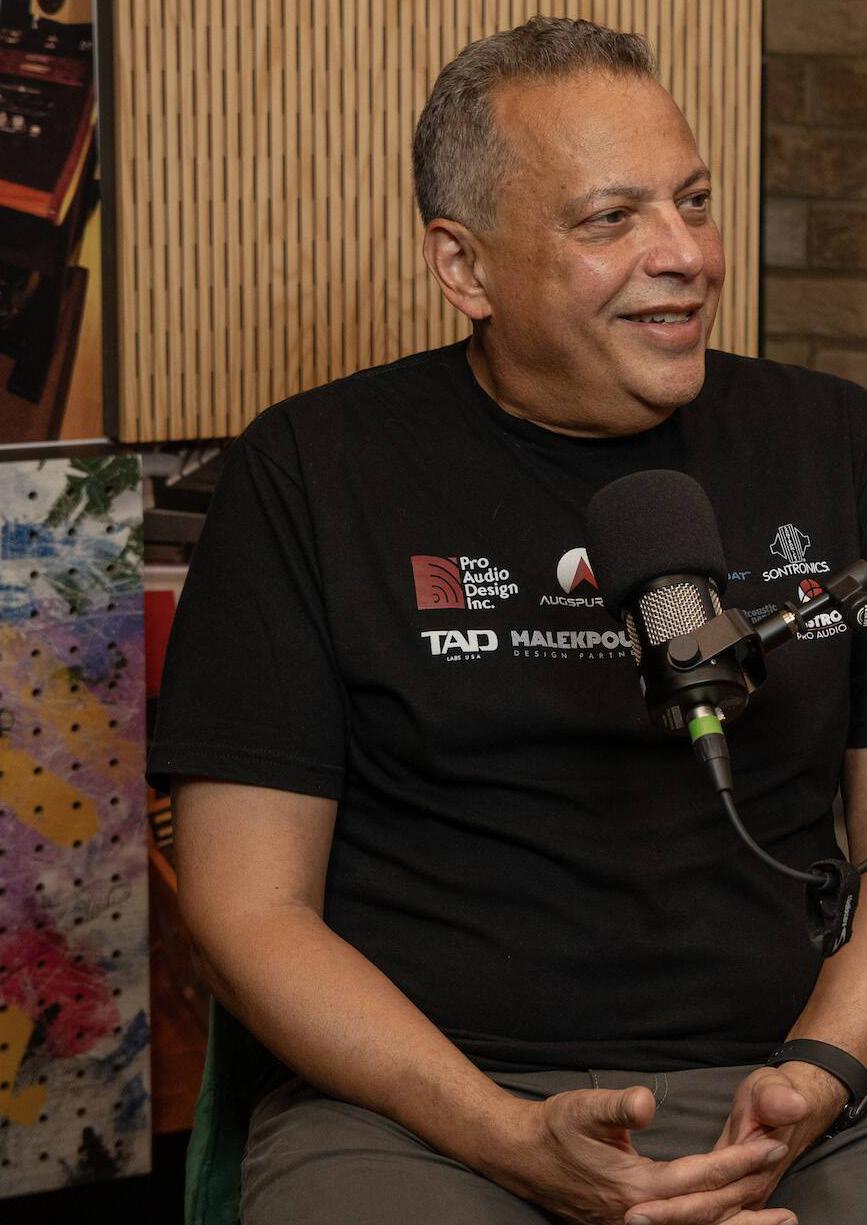
PAD (Pro Audio Design Inc) and Augspurger® Monitors president, Dave Malekpour, joins Headliner for an in-depth chat on how the monitors he builds have shaped hip-hop as we know it, studio evolution, working with the likes of Dr Dre and Jay-Z, and more.
Is there a busier person in pro audio than Dave Malekpour? Mere minutes into our meeting with the PAD and Augspurger® Monitors chief, it would appear the answer is a resounding ‘no’. Upon inquiring what he’s been up to recently, we are hit with a volley of projects and excursions the likes of which would occupy months’ worth of real estate in most diaries yet fill only the previous few days in his. It sets the tone for what proves to be a uniquely insightful and expansive conversation, as we explore how he arrived at where he is today.
“I was always attracted to music,” he starts, recalling the formative years that would see him acquire considerable skills as a musician, engineer, and

producer. “I’d wake up with melodies in my head, so I started having piano lessons around six years old. Throughout my high school life, I was in a band recording myself or my friends.
“As for how I stumbled into this career, I was in a studio recording my band in Boston. One night the console went down, and a guy came down to fix it and later on I ended up working for him. So my first gig in pro audio was working for Electronic Acoustic Research Systems, a small company that had designed studios for the band Boston, The Cars, Mission Control and other studios around town. I learned how a studio was put together from the inside out.
“Then in 1989 I launched Anything Audio, which morphed into Pro Audio Design Inc. As the name suggested, Anything Audio did anything – restaurants, stores, but then we got a job working for The Hit Factory and that was where my passion kicked in. I reformed the company as PAD to really focus on studios.”

One of the most revered studios on the planet at the time, The Hit Factory was the go-to facility for many of the biggest stars in music. It was here that Malekpour began to earn a reputation not only as
a skilled technician, but one that would move heaven and earth for his clients.
“I’d taken on distribution of Dynaudio Acoustics,” he says. “The Hit Factory called because they had a pair of M1s but when they moved locations the rooms were really different and they weren’t getting any low frequency. I called Andy Munro (Dynaudio Acoustics founder) and said, ‘The Hit Factory has a problem, can you come and help?’ It was an experience because Ed Germano (Hit Factory owner) was an intense guy. I walked in the lobby and there were plaques for
all these amazing artists, and I was so excited. But they weren’t happy with the fact the speakers weren’t living up to what they had when they bought them, so there was a moment where it was like, ‘you fix these or else…’
“We found it was a positioning issue, so we moved the speakers and solved the problem. From this tense moment they asked us to outfit another studio. It was nerveracking, but it worked out and we built a lifelong relationship. Those experiences form who you are and tested me in what I would do for my clients, and the answer is, anything.”
That willingness to go the proverbial – and often literal – extra mile for his clients opened the door to some truly unique opportunities.
“We’ve done some interesting jobs,” he smiles. “We did a job for Rockstar Games when they were making Grand Theft Auto 5, the Dr Dre version. I got a call from DJ Pooh who I knew through doing Snoop’s studio, and he’s partly behind GTA. He called me and said they were filming at a motion capture studio with Dre and Anderson .Paak. Originally they were going to just have tables where the consoles would have been, but he asked if I could get an SSL, a pair of Augspurger® Monitors, Pro Tools, and make it run so that when Dre comes in it feels like he’s in the studio. So, we had a working studio within 24 hours to film the animation of Dre. When you see him at the console his movements are real. Anderson .Paak was at a drum set; they were in those motion capture suits… Dre was shocked. He has a pair of our speakers in his studio and it made those moments in the game feel real.
“Another interesting project,” he continues, “is one we just finished for Roc Nation where Jay-Z’s career is being highlighted at the Brooklyn Public Library. We recreated Baseline, the studio we created for him in 1998. I got the original Augspurgers and refurbished them and the original SSL G+ console. We got those pieces back and restored them and my guys went in and installed them. I’ve seen some footage of Jay-Z walking around being blown away - he was right back in the place where it all started for him.”
They may not have known it, but Malekpour and his team were about to, as he puts it, “change the game for hip-hop music”. The build of Baseline back in 1998, with its Augspurger monitors and SSL G+ console, would lay the foundations for the sound of a hip-hop and R&B movement that was about to dominate the mainstream.

“WHEN YOU SEE HIM AT THE CONSOLE HIS MOVEMENTS ARE REAL.”
“It was OG Juan, who is now one of the top guys at Roc Nation, who called and said they wanted to make this studio,” explains Malekpour. “They found a building and we helped refurb it and came up with the concept. We put in a 64 frame G+ and at first we had Tannoy double 15s. But after putting a pair of Augspurger® Monitors in another studio in New York (Unique) they heard about them and wanted those. So, we built the pair that are in the exhibit now, and they were the third pair of Augspurger Classics I ever made. We built some new subwoofers I designed as well, and it just changed the game for hiphop music.”
He also recalls encountering a budding young talent by the name of Kanye West during his time at Baseline.
“He was sleeping on the couch at Baseline,” he says. “I had a conversation with him early on. He was saying, ‘I’m going to be the greatest rapper of all time’. You’d hear people saying things like that, but it turned out to be true!”
So what is it about the Augspurger® Monitors systems that lend themselves so generously to hip-hop and R&B?
“There are a number of things that have made them the standard in hip-hop, R&B and dance,” Malekpour elaborates. “Early in my career I was working in nightclubs and learned a lot about how subwoofers work. One of the places I was working kept blowing out drivers. I started doubling up and even going to four times the power - the driver would say 500W so I’d find a 1,800W amp.
“When I started building Augspurger® Monitors I added the subwoofers myself and built the first pair for Unique, and we put some 18” subwoofers in it. It was around 1998 and hip-hop was becoming mainstream and the low frequency really helped fuel the experience of feeling that music and not just hearing it. But we have lots of artists of all styles using them today. With the Augspurger® Monitors horn you get incredible dynamic range. With the smallest amount of power, we can get a very responsive output. We want you to be able to hear and feel the music..
“If you’re making music for the club, it’s good to be able to feel what it will be like in the club. Busta Rhymes is a great example. He works on our systems every day at Quad Studios and when he’s done at 3am he’ll go down to the club and play that track. When he goes from the studio to the club with the same mix I know I did my job well.”
Having navigated the digital revolution in studio design, Malekpour insists that while the fundamentals of what makes a great studio haven’t shifted too much, the needs of artists have.
“Some of the parameters have changed because for a long time people wanted to set up huge rooms for big bands,” he states. “Today people aren’t using those facilities as much. What people are looking for in a studio has changed – we might have a killer vocal booth and a bigger control room. What’s really changed is our ability to make predictions. We use predictive acoustics modelling as a key part of our studio design process.”
While Augspurger® Monitors may have clocked up more than three decades, its influence and list of credits could easily fill the resume of a brand twice its age. Over time, the company has evolved and adapted with the sector, and often set the agenda for what artists and producers can expect from the premium end of the market. For Malekpour, Augspurger® Monitors success is attributed to a commitment to fine details and, above all else, quality. It’s a strategy that has demonstrated the brand and its clients well, and looks set to do so for generations to come.
“We’ve taken this product to levels I didn’t think would be possible,” he reflects. “It’s a combination of lots of things. It’s refining the wood part of it - the horn itself (all made of solid maple). I used to laminate three pieces of 1” wood together and carve them. About 10 years ago we started to get 3” pieces of wood. It took a little time to find the right mill, but we found one that looks out for the wood we want, and they put it aside for us. Every one of our vendors is part of us.
“Because manufacturing Augspurger® Monitors started as a side project, I’ve always thought about what the best driver I can use is; what’s the best amp; what’s the best finish? Every time I look at how we can do something cheaper I would have to compromise, and I won’t do that. We make them by hand, finish them by hand, and it’ll be for the people who can really appreciate that. That’s our calling card.”
“WE’VE TAKEN THIS PRODUCT TO LEVELS I DIDN’T THINK WOULD BE POSSIBLE.”
The MI-58 Series digital IEM system has been praised for its wide 20 Hz~23 kHz frequency response, extremely low audio latency, and delicate sound. No matter vocals or musical instruments, the MI-58 system offers crystal clear sound and great hearing experience.

Now MIPRO expands the system with the new MI-580R stereo bodypack receiver. While the MI-58R receiver is powered by one Li-ion battery, the MI-580R is powered by either two AA batteries or one Li-ion battery, conveniently charging via USB Type-C. Both are compatible with the MI-58T and MI-58TD transmitters. The system also offers an ENG MODE, giving sound engineers full control over every live performance.
MI-58R / MI-580R
● Stereo / Mixed mode
● L / R AF balance
● 4 equalizer modes
● 18500 Li-ion rechargeable battery (MI-58R)
● AA batteries / 18500 Li-ion battery (MI-580R)
● USB Type-C charging port for 18500 Li-ion battery (MI-580R)
MI-58T / MI-58TD
● 12 channels (Group A) and 64 ID codes

● Dual earphone monitoring connectors
● Easy-to-read volume indicator
● Two 6.3 mm loop outputs
● ACT-BUS networking interface
● Dante® interface (MI-58TD)


Having already been selected as the world’s first audio rental company to deploy the new L-Acoustics L Series L2 at The BRIT Awards, and following its appearance at the vastly complex,
internationally-watched Eurovision Song Contest, Brit Row has now supplied the system to an outdoor, urban environment in London.
Those in attendance at this year’s Soho House Festival were served up performances from the likes of Kelis, Sugababes, Tom Grennan, Annie Mac, Pete Tong and Gabriels to name but a few, offering fans a diverse range of genres to enjoy during the two-day event in Gunnersbury Park. The festival was launched to help raise funds for a number of charitable causes through The Soho House Foundation, which raises funds for and empowers creatives from underrepresented groups, as well as aiding disaster relief.
Brit Row was approached to provide its live sound expertise by long-time client, Judgeday production director, Dave T and production manager Chris Hayter.
Brit Row account executive, Tom Brown was on-hand for support, while Brit Row system designer, Josh Lloyd, designed the rig in-line with the event’s strict noise restrictions. For control, Brit Row opted for DiGiCo SD5 consoles for FOH and monitor positions, which were utilised by all visiting engineers.
Lloyd commented on the arrival of the new system: “The L2’s design characteristics – such as the full bandwidth directivity, vertical control and auto solvers – really lent itself to this kind of challenging urban environment, which is a big, citybased residential area. Running in cardioid mode, the L2 afforded
us the kind of flexibility needed to ensure a consistent sound level.
“The system also benefits from a very directional control pattern. This meant that we weren’t fighting gain before feedback on stage, and it has controllable, high granularity that you can cut off or adjust as needed. It was also amazing doing a festival with just two amp racks on either side of the stage – it makes everything much more energy efficient!
“It was great to hear the system outside too. Soho House Festival has quite a large stage, and the physical properties of the system look small in comparison, but the SPL is so impressive, with lots of low end and punchy impact, that it was an ideal solution. The mix of dance and pop acts on the line-up all sounded great, and the visiting engineers were suitably impressed.”
The team also used L-Acoustics Soundvision 3D sound design and mapping software for ultimate control.
Freelance systems engineer Sergiy Zhytnikov also noted: “The L2 may look small, but it sounds big! This high-fidelity system makes my work even more enjoyable; I used the temperature sensor plugged into the P1 USB port, and it worked very well in helping to keep the sound consistent when the temperature and humidity were rapidly changing throughout the day. The system
sounded crystal clear and brought artists even closer to their audience.”
FOH engineer Tom Gelissen operated the system at both the Eurovision Song Contest and Soho House Festival. He said: “The fact that the L2 can operate in cardioid or hypercardioid mode comes at a great advantage. It offers a nice on-stage experience, and that helps indoors when used in complex PA configurations, such as Eurovision, but it also helps with offsite noise control. As with every system, it’s important to use it for the right project. When applied in the right situation, the L2 is a really great step forward.”
In closing, Brown added: “We have looked after Soho House Festival for many years now. It’s a very large ‘garden party’ in style, so it’s always important to strike a balance between the obvious need for high quality sound and not overwhelming the site. L2 certainly took the event to a new level. It was a pleasure, as always, to be involved and we look forward to returning next year.”
“THE L2 MAY LOOK SMALL, BUT IT SOUNDS BIG!”
NOTHING ELSE COMES CLOSE, NO MATTER WHAT YOUR APPLICATION


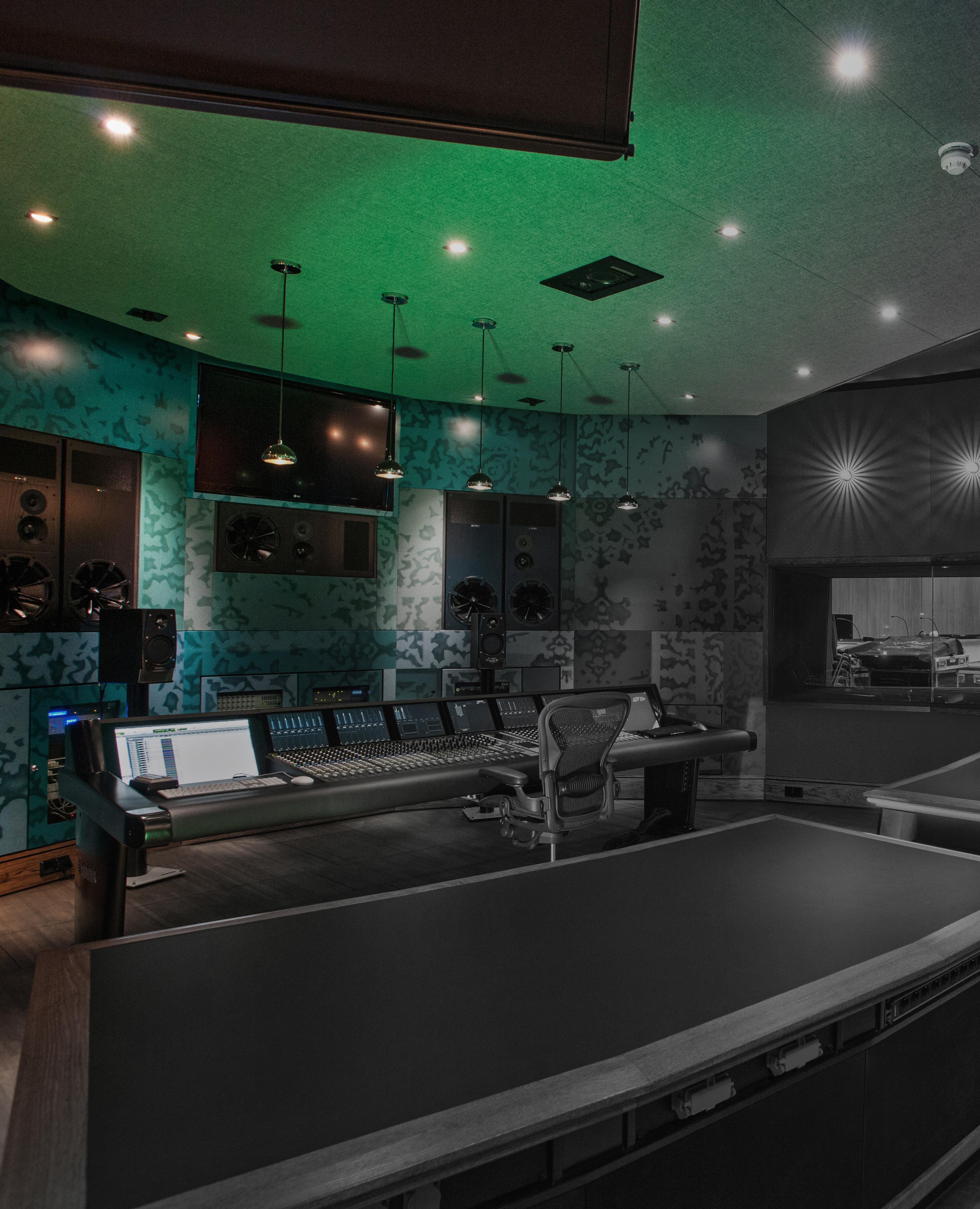
In this Emerging Headliner interview powered by JBL, L.A-based singer, songwriter and producer YOUR ANGEL delves into the meaning behind her new album, A Star in the Headlights, and reveals how her music reflects the beauty and horror of trying to make it in L.A...
YOUR ANGEL always knew she wanted to sing. “I was known in Santa Fe (because it’s a small town) as ‘Maddy, the girl who’s gonna go try and be a famous musician,’” says the singer-songwriter from L.A, which she now calls home after moving there aged 18 to pursue her longtime ambition.
“I was ready to get the heck out of Santa Fe!” laughs Maddy Boyd, the real name behind her YOUR ANGEL
persona. “I have known that I was going to pursue music as a career since I was like a little kid.”
Boyd wasted no time when she reached L.A, diving headfirst into touring with indie rock bands like Current Joys and Surf Curse – at once an exciting and dark time for the young singer-songwriter. In 2019 she left those bands to pursue her ethereal pop persona, YOUR ANGEL.

“I knew I wanted to use the word angel because when I think about putting music out, I’m always specifically thinking about teenagers for some reason, because teens love what they love so much,” Boyd explains on her artist name. “Those teens are always going to be your most loyal followers. There’s just something about teenagers and music – specifically from small towns – where there’s not a lot going on, but those teens have music. I think it’s extremely powerful and beautiful. I know when I was that age, music felt like it was watching over me; I always turned to music when I wasn’t doing well, or when I was bored, or really in any context. I think a lot of kids in small towns feel that way, so I knew I wanted to use the word angel to show I was watching over people, like being people’s personal guardian angel. I’m someone they can turn to and feel seen by. Really, the reason I always wanted to pursue music as a career path is because I’ve felt profoundly unseen my entire life, and misunderstood.”
A Star in the Headlights is Boyd’s second album, following on from her debut, Pipe Dream. Her second effort sees YOUR ANGEL fearlessly coming into her own as an artist. The 11-track LP is the product of years of experimentation and introspection, both in her work and in her personal life. Over cinematic indie-pop soundscapes, she delivers razor-sharp lyricism with dreamy nostalgia that captures her journey of self-discovery. For Boyd, it’s all about being authentic about the ups and downs of life:
“I can be somewhat stoic,” she says, elaborating that she’s an Aquarius. “I can be a little cut off, emotionally. I’m very logical, very sensitive and outwardly can be somewhat in survival mode. Music is the only place where I can properly be honest about how I’m feeling about things.”
A Star In The Headlights sees Boyd take a long hard look at her younger
self and the decisions she made when she first moved to L.A. With some space between the way she was living then and the more grounded person she is today, she can reflect with more clarity on her experiences and the way she processes emotions now.
“This album sounds like a breakup album or an album about a relationship, and in some ways, it kind of is,” she considers. “Relationships become a mirror in a lot of ways and I think that’s what I was going through with this record, just being faced with some of my own BS. My childhood was not easy and I had a lot of trauma leaving New Mexico; it’s very rare that people get out of my small town and if you do, it’s kind of a big deal. Everyone calls it the land of entrapment because no one ever really gets out. When I got to
L.A I was in the thick of it. From the outside, I was living the dream. But I was so young and had so much underneath the surface that I was letting build up and it just all came to a head with this record.”
The album’s main single, STAR tells a story about the beauty and horror of trying to make it in L.A, complimented by a cinematic music video that leans into the best and the worst of the city’s tropes, while acknowledging the bravery and cruelty of Boyd’s pursuit to make it.
“The song is about a girl fighting really hard to make it, and it’s not happening. It’s about how soul crushing it can be,” she explains. “It’s not for the faint hearted – pursuing music. It’s really fucking hard. You have to be okay with working really hard for a really long time and seeing

“THE REASON I WANTED TO PURSUE MUSIC AS A CAREER PATH IS BECAUSE I’VE FELT PROFOUNDLY UNSEEN MY ENTIRE LIFE.”

nothing in return. And the truth of it is, there are a lot of talented people in the world – it doesn’t mean you’re gonna make it,” she shrugs. “You have to be able to out-work everybody around you and be a good person that people want to work with – and also get lucky.”
Boyd is an independent artist, and carries the weight of all that comes with that in order to accomplish her goal. She’s refreshing honest about the highs and lows:
“There’s a lot of factors besides just making good music that come into play,” she says. “I cry every night just because I am fighting so hard, and so are so many other people. When it’s music, it’s your darkest feelings that you’re shoving into the world and it’s very personal. It’s an intense experience, so we tried to show that in the STAR music video, that it’s like getting beat down over and over and getting back up while asking ‘Why isn’t this happening for me?’”
It’s not all doom and gloom though –Boyd acknowledges that it’s also an exciting time to be an independent artist, despite the fact there are so many singer-songwriters trying to break through the noise: “I feel like the power is somewhat back in the artist’s hands because of the internet, but because of that, it’s extremely oversaturated,” she notes. “There’s a lot of music out there. I think what sets me apart is the visual world of my music. I write and produce it alone and then take it to other people to do extra stuff. But truly making music by myself with no filter allows me to explore things and be honest in a way that I don’t think you could with someone else in the room. I think that adds a layer of uniqueness. But also the visual world that YOUR ANGEL lives in is very important to me. It’s not just me putting music out. It’s its own little universe that I’m trying to create.”
When YOUR ANGEL takes to the stage these days, she’s using a JBL
EON ONE Compact portable PA with a professional-grade mixer, which she relies on for gigging.
“Touring is really amazing. I truly love it,” she smiles. “This is the first PA I’ve started using and it’s honestly been so amazing because my band plays with inear monitors, so essentially we can practise wherever there’s a drum kit. It’s really hard to fully practise when you can’t feel the full sound in the room. It has four inputs and because we play to track, we can feel the vibration of it and practice in the context of actually playing live. It’s been a really sick thing to bring around to places and not having to pay for a rehearsal place.
“Especially for independent artists who are on a budget, this really opens doors because renting out practice spaces can break the bank a little bit, especially if you’re hiring a new band and they need to learn a lot of songs,” she elaborates.
“That takes hours, and that’s a lot of money to spend at a practice space. Being able to essentially have your own practice space at your house is huge. That’s a really big deal, especially for people who are starting out. You can really bring it anywhere – it’s compact and kind of a no brainer!”
Being an independent artist, YOUR ANGEL doesn’t tour or gig with a big team, so an easy set up and intuitive functionality is crucial for a seamless set: “It was so easy! You literally just plug it into the wall. It’s so simple and it’s such a fun thing to be able to throw house shows or practise it anywhere. It would be really great for playing acoustic sets too,” she notes. “I’ve always wanted my own PA system and to have a portable one is so cool. Also it sounds so good,” she enthuses. “And it can get loud – it fills the room! Being able to practise with it makes me feel more comfortable getting on stage too because we can find our mixes before we go to soundcheck.
Especially if you’re an opening act, your sound checks usually get cut short so you have to be able to act on your feet and you need to come as prepared as you possibly can. This has helped us be able to do that.”
With A Star in the Headlights reflecting on a younger version of herself, Boyd reveals she is already working on her next album, giving an insight into the next iteration of YOUR ANGEL.
“There will be new music this summer; I’m always putting stuff out there very consistently,” she shares. “You can definitely expect more visuals and more music from me, and hopefully a tour. I’m manifesting,” she grins. “I’m hoping that somebody will take me on tour with them. I’m already eight songs into another album, working on music that is way sicker than A Star in the Headlights, and I think that’s how it always should be. You should always be on to the next and feeling like what you’re doing now is cooler than what you’ve done before.”
POWERED BY
JBLPRO.COM
INSTA: @YOURANGELMUSIC
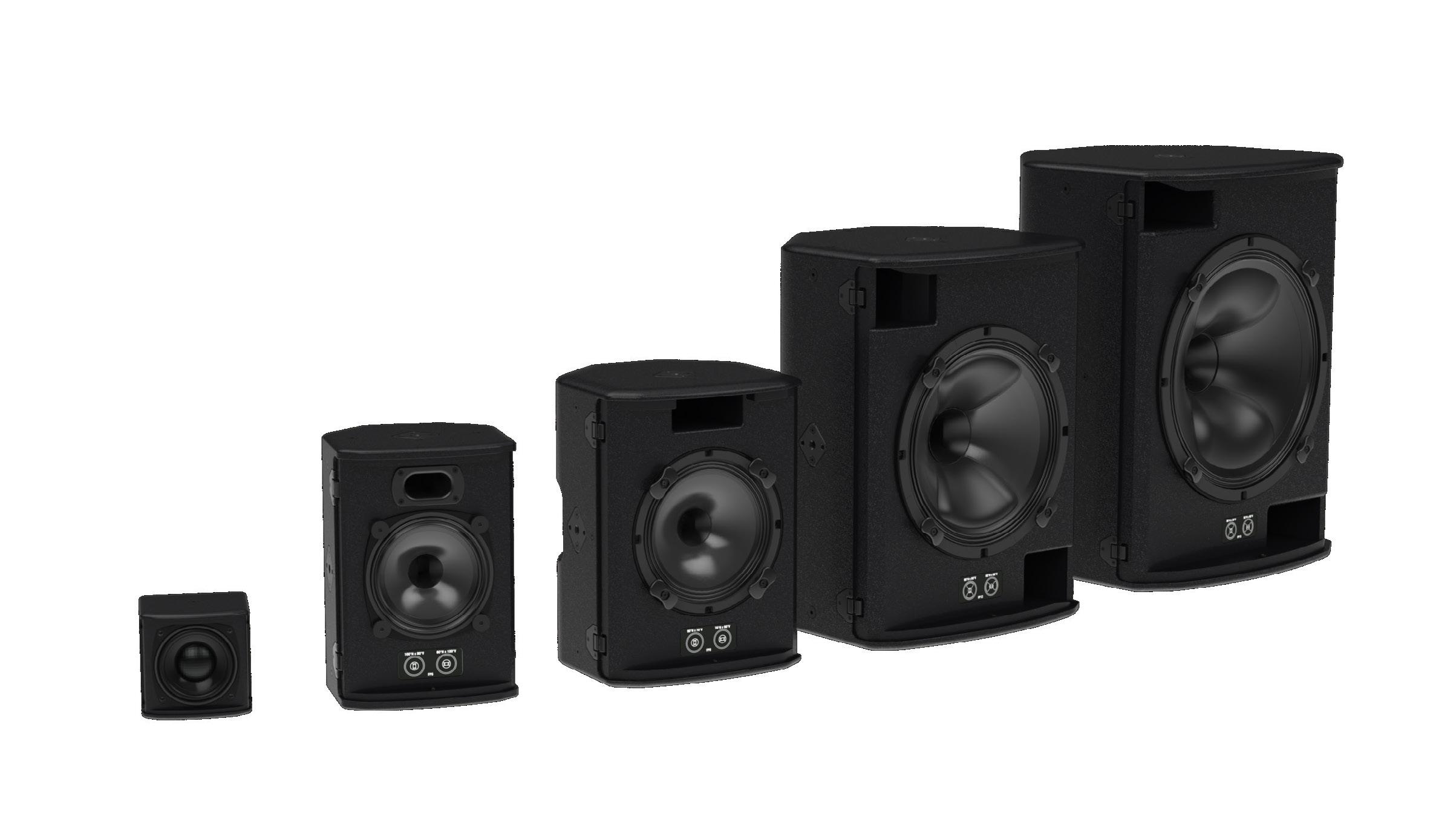


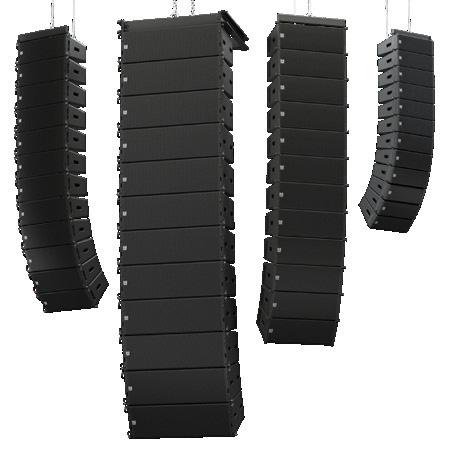
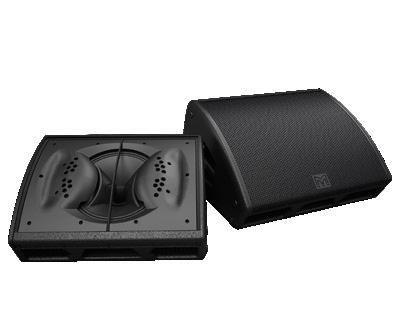
K-array recently brought its sonic quality to the No Borders Music Festival 2023 – a listening experience in contact with nature that ran throughout July in Italy’s Friuli Alps. Headliner discovered how the K-array sound system has become a signature feature of the festival, and heard from some of those involved in this year’s outing…


Friuli Venezia Giulia’s No Borders Music Festival, which this year entered its 28th edition, is one of those events you don’t want to miss.
The location on the border between Italy, Austria, and Slovenia – although rather tricky to get to – is arguably one of the most beautiful and inspiring of any European summer festivals, accompanied by incredible sunrises, fresh mountain air, and scenic views of the valley below. Good vibes were promised from the jump, with a lineup that included Ben Harper, LP, Skunk Anansie, and Mika amongst many others.
K-array, a leader in the pro audio industry, was the chosen audio system by the rental company and festival organisers. Having sponsored the event in previous years, K-Array has now become a signature audio style of the event itself.
The collaboration aligns with K-array’s commitment to support events that
promote culture and respect for the environment, people, and artists. In a concert, sound plays a fundamental role, yet the listening experience can often fall short of expectations. Issues like excessively loud sound, uneven distribution, or unnatural audio quality can affect the audience’s experience and distort the artistic performance.
K-array’s audio technologies ensured superior sound quality, providing all attendees with the same listening conditions without altering the original sound. In this case, the sound system became a true artistic extension of the performer – respecting and enhancing their performance. As a festival with comparatively simple technical characteristics, the audio requirements demanded a classic L-R system with an arrayed sub line and front fills.
Speaking exclusively to Headliner, K-array concert series product specialist, Klaus Hausherr, says, “The type of concerts that take place at the
No Borders Music Festival require a very precise coverage of the public area, without disturbing the quiet of the mountains that frame this amazing location. The relationship with K-array started five years ago and we supplied, during the first years, a Mugello system (KH5 + KS5), to then move on to the Firenze series in the last two years (KH7 + KS8), with great satisfaction from the production.”
The most important and unique feature of the K-array system on this occasion was its beam steering, which ensured an uncompromising listening experience throughout the festival area:
“The configuration of the system was very simple, therefore there were no major difficulties,” adds Hausherr. “The use of beam steering in the system has guaranteed a very significant SPL balance (difference between front stage and back area 2/3dB), and a consistent frequency response over the whole area.”
“BEAM STEERING IN THE SYSTEM HAS GUARANTEED A VERY SIGNIFICANT SPL BALANCE AND CONSISTENT FREQUENCY RESPONSE OVER THE WHOLE AREA.”

For the area’s sound setup, a K-array Firenze-KH7 system was used, chosen for its uniform diffusion and precise sound control through digital steering, a crucial feature in reducing acoustic pollution in pristine environments like these. Sleek and compact, these self-powered and weather-resistant speakers offer a unique solution for live events.
The compactness and efficiency of K-array speakers also make them ideal even for a setting like the No Borders Music Festival, handling these logistical challenges without compromising sound quality.
“Since I have been following this festival for many years now, I can only give positive feedback on the behaviour of the system and the professionalism of the production,” Hausherr continues. “Almost all the sound engineers approached the sound system with a little diffidence, but as soon as they heard how it behaves, they all recognised an extraordinary definition, guaranteed by a very fast and constant transient response throughout the area.”
The feedback on the system and its performance from all engineers involved has been overwhelmingly positive. The K-array system was
provided by Arcadia, which has gained considerable experience over the years in technical services for entertainment, specialising in creating significant structural and scenic installations, lighting, audio, and video systems for theatre, television, and high-profile live music events.
K-array has also established a close working relationship with Claudio Tognoni and the No Borders Music Festival production team, whose trust built over the years has led to continuous success in previous editions of the festival.
Musician and songwriter Doro Gjat, who hails from the Friuli region and played No Borders again this year, tells Headliner how he first played the festival in 2017:

“It was in a wonderful valley named Val Bartolo in amongst the mountains of Tarvisio, surrounded by little huts,” he says. “I loved the location and the energy of the crowd as well. What makes this festival so unique in its experience is the surroundings. Imagine being on a stage placed in front of a pine forest, right on the side of a little lake. The energy coming from the crowd is so synced with the environment – it’s amazing!
“Those in the crowd are the best qualified to answer the question of how the audio sounded; for me, based on working with everyone involved, I’ve never had any reason to complain. The audio service personnel have always been very professional, and absolutely on point with the equipment.
“For me on stage, the K-array system sounded beautiful without being too loud, which is probably why the artistic direction of the festival leans more towards acoustic sets. The environment calls for moody sounds which pair well with the surroundings. Imagine being in a natural environment listening to industrial sounds – they won’t fit. Otherwise, mellow guitars, beautiful voices enunciating beautiful words, long reverbs, natural delays and the right amount of percussion resonating through the woods is like the perfect solution.”
K-ARRAY.COM
NOBORDERSMUSICFESTIVAL.COM
ALL-IN-ONE | REPLAY | CLOUD
SDI | IP | HYBRID VIDEO NETWORKS




ALL STANDARDS | WIRELESS | IP INTERCOM





CONVENTION CENTERS

STADIA





THEATERS CRUISE SHIPS
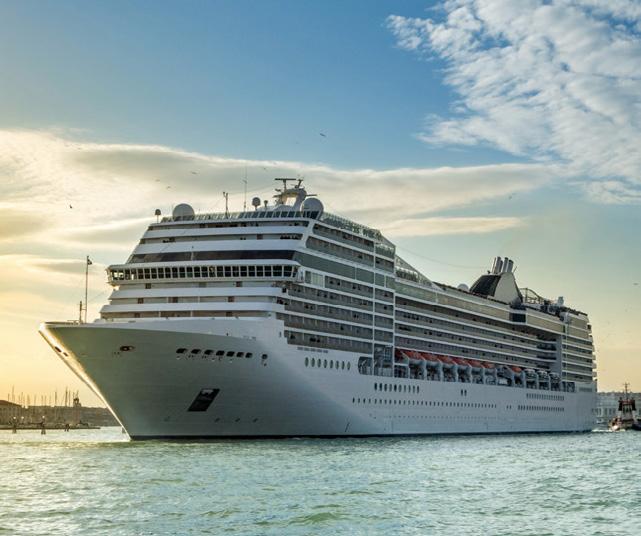
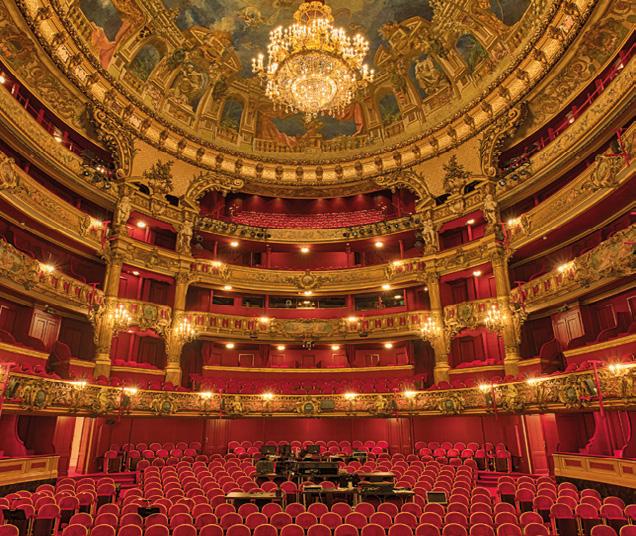
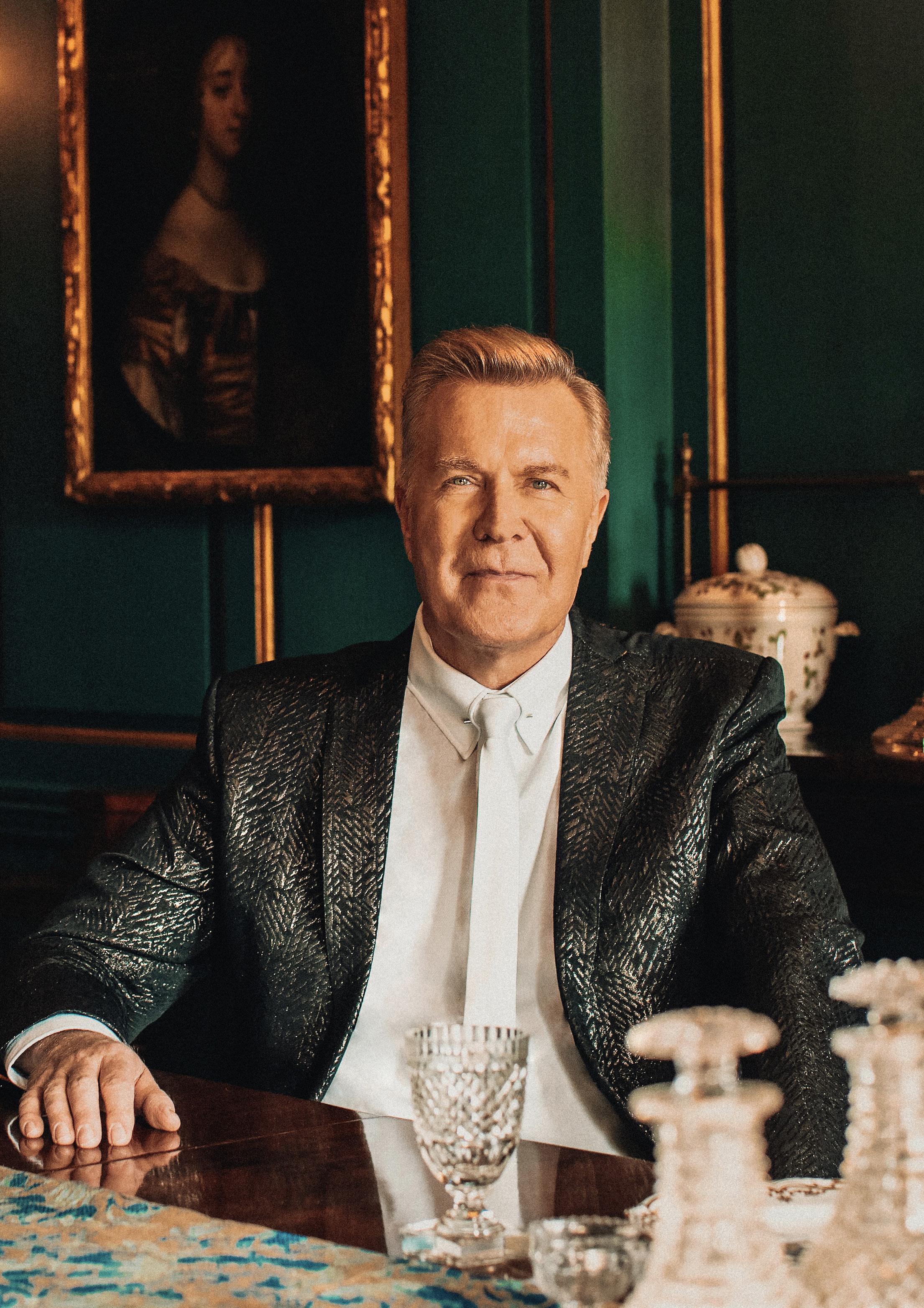
Martin Fry, frontman of iconic ‘80s outfit ABC, sits down with Headliner to talk about the release of new live album The Lexicon Of Love Live, which marks 40 years since the release of the band’s beloved debut record, as well as his love of the punk and post punk scenes that surrounded them, and what keeps him motivated to make new music…
A beaming Martin Fry appears before us via Zoom, as we connect with him for a chat about the 40th anniversary of his band’s legendary debut record The Lexicon Of Love. He’s currently residing in the Caribbean, which at least in part may explain his sunny disposition. “I’m in Barbados,” he smiles, “so I’ll be going for a swim after this,” he breezily informs us when we inquire as to his whereabouts and
what he’s been up to. Evidently, we are fortunate to have stolen away such a chunk of his time.
Of course, there is more to the ABC frontman’s contentment than just his sun-kissed surroundings. At the time of our conversation, he is about to release The Lexicon Of Love Live, a new live recording of the band performing their debut album in full
at their hometown venue Sheffield City Hall. The night, he tells us, was an unmitigated triumph, fuelled with further poignancy on account of the show taking place 40 years to the day since the album’s release.
“Live albums are not very in vogue now, but I grew up on them,” Fry says
on the subject of live albums. “That’s how I got to know the Rolling Stones and The Who and David Bowie, it was always a great way of getting all the songs in one place. About 10 years ago we started playing orchestral versions of some of our songs and it worked out really well, so we were perfecting that show over a few years and thought it would be good to document it. Then someone said, ‘you’re playing Sheffield 40 years to the day since The Lexicon Of Love came out.’ So, it was our destiny to play it that night. It’s always a very emotional thing to go back to the city where it all started and it’s always a great feeling playing Sheffield. I didn’t really want to record 12 shows and edit it all together and auto tune every last handclap. It’s just the show in all its glory.
“There was magic in the air that night,” he continues, “for a lot of different reasons. I saw The Ramones and Blondie at Sheffield City Hall. When I was a student, I used to drink in a bar opposite and a guy would bring in any extra tickets. I saw Hall and Oates there one night on a free ticket. I was an impoverished bohemian student with no money. When you form a band and you first start out you have to go around every pub in town telling everybody - mostly other musicians - that you are the best thing ever. It’s a wish fulfilling prophecy and a lot of that went on in Sheffield, and songs like The Look Of Love and Poison Arrow were conceived sitting at the top of the bus on the way home after a night out clubbing. So, to bring it back home all those years later felt great.”
While many of the artists that Fry cites as influences in the late ‘70s and early ‘80s were concerned with reflecting the darker, grittier aspects of working-class Britain, be it the Sex Pistols, The Jam, or Joy Division, ABC were determined to create a more glamourous aesthetic. Bedecked in sparkling tuxedos and boasting a Trevor Horn-produced sound that infused brassy blasts with twinkling pianos and shimmering
synths, ABC and The Lexicon Of Love certainly made their mark.
“We wanted to plant our flag: welcome to the world of ABC,” Fry asserts. “You either liked it or loathed it. And the
way we presented it was like… I was wearing a sparkling tuxedo, so again, people loved it or hated it!” he laughs. “Everything we did was like that, from the gigs to the sleeves. You know, ‘is
“A LITTLE KNOWLEDGE IS A DANGEROUS THING. IT MAKES PEOPLE CAUTIOUS. WE JUST WANTED TO TAKE ON THE WORLD.”
it too schmaltzy to put strings on a record?’ No. We wanted that because we were ABC. We were making dance music for the future. It’s a very pompous, arrogant way of looking at it, but it served us well. We all had something to prove.

“We used to rehearse on this derelict street in a derelict house where there were no neighbours, so we could rehearse every day. So, we set about writing stuff and then we’d play shows at Leeds Warehouse and Sheffield Art College and record companies got interested in us, and we had a hit with a song called Tears Not Enough. Then we heard a song on the radio called Hand Held In Black and White by Dollar, which was produced by Trevor
Horn and it sounded like Simon and Garfunkel meets Kraftwerk. It was an incredibly ambitious record, and we were an incredibly ambitious band, so we contacted Trevor and started recording the bulk of The Lexicon Of Love at Sarm East Studios in London underneath a salubrious wig shop on Brick Lane. We pushed Trevor and he pushed us. It was the first album Trevor had produced apart from his own stuff, so it was an exciting time. We were fearless because you don’t really know you are going to make a mistake. When you make your first album you just go with the flow. And a little knowledge is a dangerous thing, in a way. It makes people cautious. We just wanted to take on the world.”
And take on the world they did. Before long, ABC were not just topping the charts but toppling their idols.
“I remember Avalon by Roxy Music was No.1 one week and our record went to No.1 the following week, so it arrived with a bang,” smiles Fry. “That felt good. But your life doesn’t change though. I wasn’t on the dole anymore but I was only on about £50 a week, trying to work that out and be famous! But the music took off pretty quickly.”
Today, Fry is still possessed with a drive to keep writing and performing. It is, however, something that he concedes has ebbed and flowed over the past four decades.
“What is really inspiring is playing shows,” he says. “You play festivals and there might be 40,000 people singing back at you. That definitely inspires you. About 10 years ago I was thinking about how much longer I could go on performing, then we did a show at the Royal Albert Hall with the orchestra, and I could see in the crowd how much the music meant to
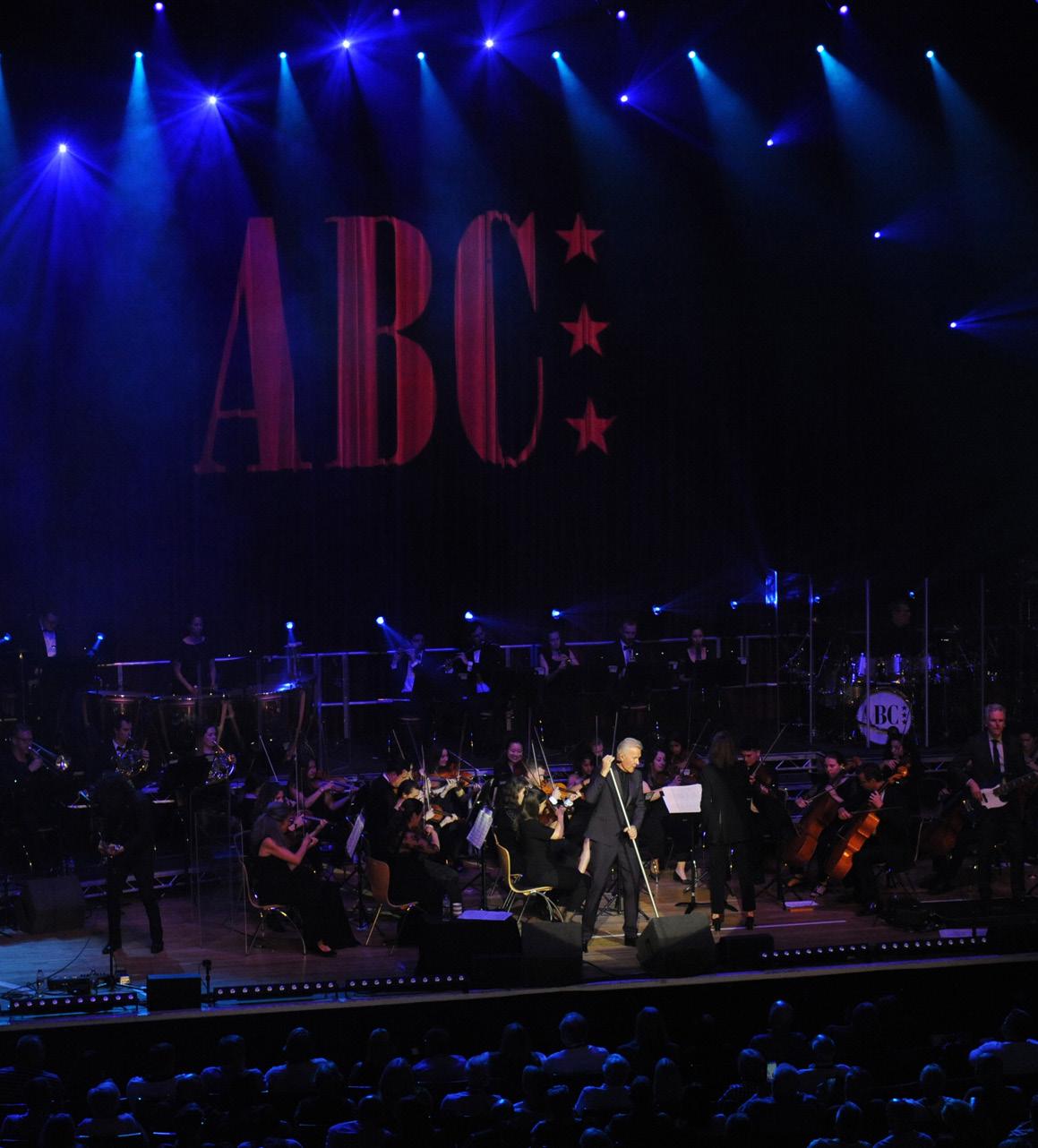
people. And that inspires you to make new stuff.”
As for what the future holds, Fry is making no fixed plans. He’s certainly not ready to hang up that sparkling tux anytime soon, but as for when it’ll be given its next airing, is a conversation for another day.
“It’d be nice to make a new record and maybe go off on a different tangent,” he says thoughtfully, glancing off to the distance, perhaps towards the Caribbean Ocean awaiting him. “We’ll have to wait and see.”

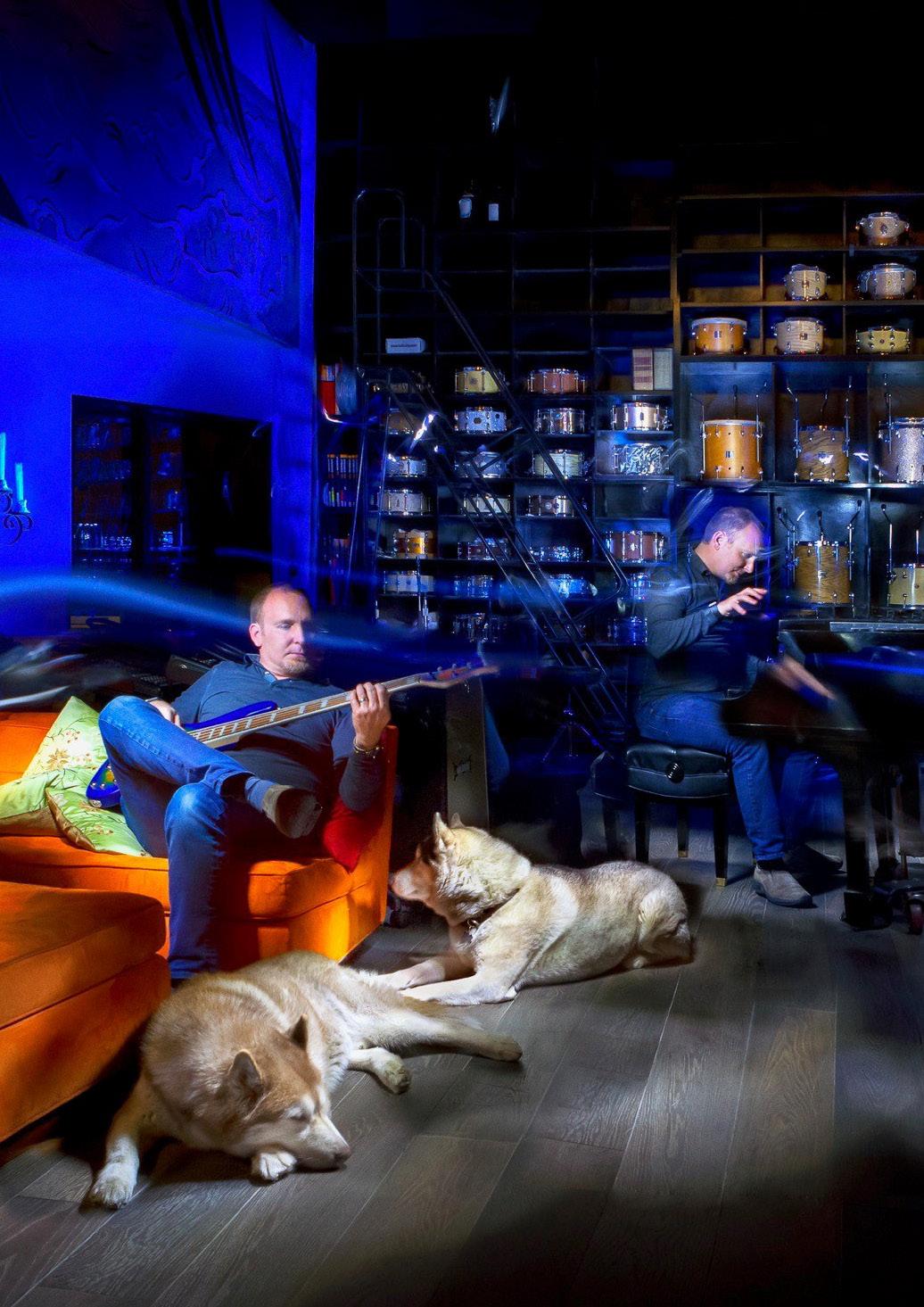

Engineer and producer Francesco Cameli, the man behind the London and Los Angeles iterations of Sphere Studios, has become one of the first people in the world to own a new Prism Sound Dream ADA-128 multichannel converter, the portability and flexibility of which he says is ideal for his current workflow…
“It’s impressive,” begins Cameli, who has been using Prism Sound converters for over 20 years. “The audio quality is everything you would expect from a Prism Sound product. It is sonically accurate and doesn’t colour the sound in any way, which is exactly what I want from a converter. I would far rather work with a converter that gives me a true representation of what I am recording, rather than something that makes everything
sound warmer and brighter than it is. Prism Sound conversion is always honest, and this new unit continues that pedigree.”
As an engineer with millions of record sales to his credit, Cameli needs little introduction. In 2001, aged just 22, he opened the multi-room Sphere Studios in London and ran it as a highly successful facility for 14 years before deciding to relocate to the USA
During that time Sphere London hosted sessions for many internationally acclaimed artists and producers, including Queen, Genesis and Sir Andrew Lloyd Webber. Cameli – an Italian-born bassist, who attended The Musicians’ Institute in London and Berklee College of Music in Boston – also achieved recognition, winning two Tech awards for his work with Adele on 21 and for the soundtrack for the James Bond film Skyfall
Relocating the studio complex to the US west coast was a marathon project that finally came to fruition in 2016 with the opening of Sphere Studios Los Angeles. This facility in North Hollywood was formerly Kung Fu Gardens, a studio owned by singer-songwriter and record producer Linda Perry. Cameli wanted to maintain the creative vibe of the existing studio but was also keen to marry that with functionality. To that end he transported a lot of the equipment from Sphere London to the new base, including a vintage SSL G Series console and the large collection of Prism Sound ADA-8XR multi-channel modular AD/DA converters that he had built up over the previous 14 years.
“Prism Sound was very much part of the Sphere London experience,” he explains. “Everyone who worked there loved the ADA-8XRs and were equally pleased when we added a Prism Sound/Maselec MEA-2 analogue equaliser and a Prism Sound/Maselec MLA-2 analogue
compressor to our equipment list. All of this moved to L.A with me and became just as popular with customers in the USA.”
One artist in particular loved Sphere L.A so much that they made it their mission to buy it. Throughout the COVID pandemic and beyond, the artist (who can’t be named for contractual reasons) made offer after offer until eventually, in 2021, Cameli agreed to sell the studio.
“I had no intention of selling Sphere because it was a fantastic studio and I was so happy there,” Cameli says. “We had many hit records, amazing staff and great equipment, including walls of Prism Sound converters. Initially I turned down all offers to buy it, but eventually I capitulated.”
When Cameli finally handed over the keys to Sphere L.A, he went home with one of the older Prism Sound converters, a Pro Tools rig, his vintage guitar collection and four drum kits. He admits it was quite a shock to find himself not owning a studio, but the self-imposed break has given him a chance to think about what he wants to do next.
“I’ve been hopping around other studios as a freelance engineer and that’s been fun, but I can never look at another person’s studio without feeling I could improve on
“PRISM SOUND WAS VERY MUCH PART OF THE SPHERE LONDON EXPERIENCE.”
it,” he says. “I guess that’s the legacy of spending 20-odd years as a studio owner. I’m not sure I want to go back to owning a large complex, but I can see myself setting up something smaller in the future if the right premises turns up.”
A driving factor in that decision could well be Cameli’s recent acquisition of the SSL G series console that always had pride of place at Sphere – firstly in London and then in L.A. He quickly realised how much he missed it and was delighted when Sphere’s new owner agreed to sell it back to him. Knowing it was on its way prompted Cameli to order a new Prism Sound ADA-128 modular converter so that he could complete the mix room environment he has now set up at home.
“My relationship with Prism Sound is very good and I was aware for some time that this new converter was in the pipeline,” he says. “I wasn’t convinced that anything
could beat the sound quality of the ADA-8XRs, but this unit certainly impresses. Also, the fact that it is so small means I can now take it with me wherever I go, and I’m not tied to the converters other people’s studios offer.”
Prism Sound’s Dream ADA-128 is a modular audio conversion system offering up to 128 channels of 32bit A/D and D/A conversion at sample rates of up to 768kHz. It is designed as both a conversion system and a high-performance, networkable audio distribution and processing system, with a flexible 2RU mainframe that can be fitted with up to 16 analogue and digital IO modules (each of which nominally provides eight input or output ports, or both). Up to four host modules provide bidirectional multi-channel connections to host computers, workstations, networks etc, with the ADA-128 providing free routing between all of these inputs and outputs under detailed user control, as well as a wide range of processing functions.

Aimed at audio professionals across many different disciplines, including music recording, Atmos mixing, post-production, broadcast and installation, the ADA-128 builds on Prism Sound’s ‘no compromise’ design philosophy but moves the game forward in terms of power, functionality and flexibility, as well as offering a cost effective solution for those who require a high channel count.
“My ADA-128 is set up as a single user unit, but because it has four host ports at the rear I could, in theory, add three more host cards and significantly expand the system,” Cameli explains. “If this unit had existed when I built the first Sphere complex, I could have put a couple of them in my central machine room and simply assigned I/O to wherever it was needed. Genius! I can certainly see the benefits of having a modular system and I am sure there will be a lot of larger facilities that will appreciate it.”
For now though, Cameli is simply enjoying the sound quality offered by his new ADA-128, which he is using in conjunction with his G Series SSL and Pro Tools.

“My whole setup is high quality, from the console and converter through to the PMC BB6 monitors that allow me
to hear exactly what I am recording and mixing with no nasty surprises,” he sums up. “What I hear is what I get. It’s accurate and true and when I give a client the finished result of my work, I know that it will sound good through any set of monitors. As engineers, we are only a very small part of the creative process. Our job is to help the artist capture the sound they have envisaged without messing it up. Fixing mistakes is not creative, which is why I want all the equipment I use to be invisible in terms of its sonic input. Prism Sound’s converters do this admirably and I am really pleased that the new ADA-128 continues this tradition.”




Headliner discovers how production specialist and integrator Tongbo recently designed and installed a complete CODA Audio system at the FIFA-approved international football stadium in Qingdao, China…
Part of the Park Sports Complex in the Chengyang district of the Chinese city of Qingdao, the Qingchun Football Stadium was designed by the China Southwest Architecture Design and Research Institute, and built by China Construction Eighth Engineering Bureau. With seating for 55,000 spectators, the stadium constitutes a major development for international football in China. With ambitions to stage the Asian Cup and World Cup tournaments in the future, the Stadium needed to conform to the stringent standards of the game’s worldwide governing body, FIFA, as set out in its Stadium Technical Recommendations and Requirements.
The fully-roofed, two-tier construction provides for every requirement of players, officials, media representatives, VIPs and fans to international standards, while a

multifunctional training hall, swimming pool, two further grass pitches and commercial spaces complement the development of the site.
Leading production specialist and integrator Tongbo was engaged to supply and install a comprehensive audio system for the Stadium, and chose a CODA Audio system to meet the demanding brief. The primary objective of the system is to ensure exceptional power and clarity, in order to ensure that everyone present inside the stadium can hear announcements at all times, often against the background of loud crowd noise. Headroom in such circumstances becomes a vital element of the PA system, as does the ability to precisely control its area of coverage to avoid the sound reflections created by many walls and glass surfaces.
The system at Qingdao deployed two of CODA Audio’s principal ranges to cater for the seated areas and playing-surface areas, respectively. CODA’s HOPS12i high-output threeway point-source loudspeaker was used for the main seating areas. 20 groups of three HOPS12i (140° vertical x 90° horizontal) were mounted under the catwalk to give even coverage of the entire area, while ViRAY compact line array loudspeakers took care of the playing area.
Four groups of eight ViRAY (two groups on each of the east and west sides) comfortably cover the pitch.
A further six CODA Audio G512-PRO 12” compact two-way versatile point source speakers can be deployed for the rostrum area or anywhere else in the stadium where mobile returns are required.
“In the first event of this year, the sound clarity and coverage were excellent, providing a natural
balance,” said senior engineer Lang Jun. “The audio maintained high clarity whether at low sound pressure or high sound pressure, receiving praise from the owner and various parties.”
“We’re very proud to see CODA Audio providing the solution for such a high profile stadium in China,” added CODA Audio director of global sales and marketing, David Webster. “This is a major project in a venue that will stage leading international matches and serves to demonstrate how the audio quality, flexibility and adaptability of CODA
systems can meet and exceed the very highest standards demanded.
“The Qingchun Football Stadium is also another fine example of Tongbo’s excellent work - their team has now been involved in the delivery of a wide variety of large scale prestigious installations and live performances using CODA, all of
which have securely cemented our high reputation amongst their clients.”
CODAAUDIO.COM
“THE SOUND CLARITY AND COVERAGE WERE EXCELLENT, PROVIDING A NATURAL BALANCE.”






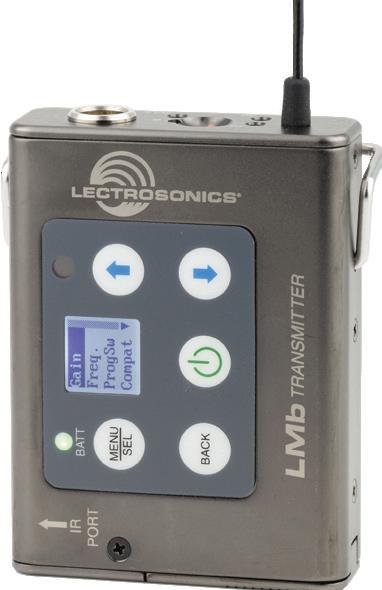

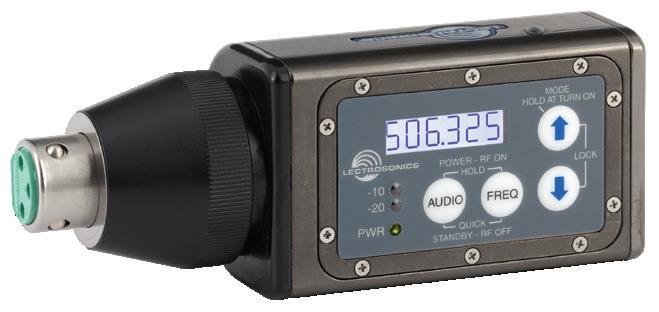

Guns N’ Roses guitarist Richard Fortus explains when he became a fan of the band, why live shows are the main way musicians make money these days, and why he uses Celestion speakers…
What was your favourite music growing up?
When I was little, around eight, like every other kid at that time I was into KISS. Then there was Aerosmith, Queen – those were the biggest bands in the world at that time. As I got a little older, 11 or 12, I started listening to a lot of the more art-rock stuff like early Genesis. I was really into Yes, King Crimson, Jethro Tull, bands like that. Of course, David Bowie. Later still, I got more into the jazz-fusion stuff that started going on. Jeff Beck’s Wired and Blow by Blow period was huge.
That led me to things like Mahavishnu Orchestra, Chick Corea with Return To Forever, and the Dregs. So that’s where I was when I started playing guitar – obsessed with players like Robert Fripp, Jeff Beck, Steve Howe, early Santana and Peter Frampton.
In an industry that likes to pigeonhole people, how do you shift musical gears so easily and avoid getting typecast as this or that genre of a guitarist?
When I would get called to do sessions, the producer who hired me
would usually say, “I just want you to do your thing!” So, I’d have to think about where that producer got my name and what they think “my thing” is, then try to deliver it. But really, it’s simply that I just love all types of music. I think I don’t get typecast because I pull from such a broad palette and genuinely love it all. I feel very fortunate in that regard.
How did you get the gig with Guns
N’ Roses?
I got called to audition. I was scheduled to be in L.A. anyway working on an album. They sent me some music, we went back and forth, but then as I was departing for L.A., I couldn’t reach them. I get to the album session, and Tommy Stinson and Josh Freese, who were in Guns N’ Roses at the time, were on it too! They said, “Oh, you’re the guy from New York!” What had happened was, Axl Rose had found the guitarist Buckethead and called off all auditions. Nonetheless, Tommy and I became very good friends. Cut to a couple of years later. I was on tour in Europe with Enrique Iglesias. Tommy called me and said, “Would you audition for Guns? We need somebody.” I had a break of two days in my schedule. After three shows at Royal Albert Hall, I flew straight to L.A., auditioned, listened to new material with Axl in his car all night, flew back to Ireland and finished the Enrique tour. Right after, I started rehearsals with Guns.
As a guitarist, what is it like working with Slash?

Slash and Duff and I all come from similar musical backgrounds and have a lot of the same influences. We get along very well, and the funny thing is, I wasn’t that into Guns N’
Roses as a kid because I lumped them in with all the other ’80s hair metal. I supposed I realised they were more legit than bands like Poison, but they weren’t on my radar then. Once I got into the band, I realised how much we have in common.
How did Celestion speakers first come into your world?
Inside a Marshall cabinet, of course! I was a Marshall fanatic as a kid. I have since grown to love Celestion for other reasons. Some of my favourite speakers they make now are the
“I FEEL LIKE CELESTION IS PART OF MY VOICE.”
How do these models differ in terms of your applications or what you like about them?
The G12H gives me more of the tight low end I want to hear. The Gold provides more of the shimmer on top. That’s why I have both in one cabinet. Then in the little Magnatone, the Alnico Cream just has the most magical midrange right out of the box. You don’t have to break those speakers in. The front of house engineer blends those two amps. I also have a low-powered Fender Tweed Twin. I put a pair of Alnico Creams in that amp temporarily while I had its stock speakers reconed. I never put the stock ones back in. Those Creams turned a good amp into a great amp. That got me on this whole kick of trying Celestions in vintage Fender amps. I wish Celestion would make a 10-inch version of the Cream!
Is that because a smaller driver responds more quickly?
Partly, yeah. But I have a 1962 Fender Vibroverb that uses two 10inch speakers. That amp through Creambacks would be incredible. So, I wrote those guys a letter. Please make it! Ten-inchers are a different world in terms of sound and feel. In combination with 12s, you get the best of both worlds. I have a vintage Marshall 8x10 cab that I use together with a 4x12, and it just sounds spectacular.
What advice would you give to someone who wants to have a career like yours?
Alnico Creambacks. In my live rig with Guns, I have a Magnatone Twilighter, which is a combo amp with a single 12-inch driver. I swapped out its stock speaker for a Creamback. Then there’s a 100-watt Voodoo amp. The cabinet I use with it has four Celestion speakers: two G12H on one diagonal and two Gold on the other. CELESTION.COM
Don’t go into the music business at all! [Laughs.] I was lucky enough to catch the tail end of session work when there were actual recording budgets. During most of my early career, most of the revenue came from record sales and touring was done to support the record. Now, it’s flipped. If you manage to make any money at all it’s going to be from live shows and merchandise, and your record is one more piece of promo to support that. So, if anything I’d say gravitate towards touring work. I also recognise that some people don’t do this as a choice. They do it because they have
no other choice. It’s who they are. It’s certainly who I was, staying up half the night as a teenager, listening, analysing, transcribing and copying riffs. If you’re in that boat, learn software like Pro Tools. Be a recording engineer on top of playing an instrument or singing. Put out as much music as you can.

How would you describe your relationship with Celestion as a provider of your equipment and musical partner?
I feel like Celestion is part of my voice. I have a real affinity for British amps, so much that I had 240-volt power installed in my studio so I can run them as they were meant to be run. Beyond the tubes and transformers, the biggest part of that sound is Celestion.


Director of global product management for installed audio at Harman International, Phillip Scobee, speaks to Headliner about his professional background as a live sound engineer, key topics and trends in product development, and reflects on some best practices and challenges currently facing the installed audio market.
Could you start by telling us a bit about your background working in live sound?

I’m very fortunate to have worked with many, many great artists over the years. One that really set me a sail for the future was when I ended up working with a country music band out of Nashville called Alabama. They started in early ‘79; I joined them later in life and was fortunate enough to run
with their career all the way through to the end of their season. They’re back now, but we officially retired from that run around ‘06 or ‘07. It was a privilege and an honour to work with them for so many years, and I’ve also worked with other big country artists including Tim McGraw and Kenny Chesney.
When did you make the initial move over to product development?
I worked a lot with Crown over the years, developing tours and building a lot of artists; I ended up buying a lot of gear and formed a really good relationship with the people at Harman, so I was working at Crown managing touring amplifiers at the time. Through the nature of Harman
being a multi-brand corporation, they needed me to come to California and work in the install and tour groups before they were made separate. I’ve been at Harman for around 10 years now. I manage a team of 10 who are scattered around the globe; everything from a small microphone or ceiling speaker all the way up to the largest PA box and DSP or amplifier –any product used in the install realm falls under my team.
What are some of the highlights of your career so far?
On the project side, I’ve had some great ones here at Harman. I’m working on one now that I can’t give too much information on – it’s codenamed Titan, and it’s been a large development process for a new DSP box that will be used widely throughout the world. We started that a long time ago, and then Covid hit and derailed everything, so it’s been an ongoing project with 160+ engineers for a few years now. It’s the largest, most complicated thing I’ve ever dealt with, and it’s also the most exciting for that same reason. I also have many personal highlights on the engineering side, including winning Grammys and other awards with the artists I’ve worked with – all of which are very special to me.
Can you describe a typical day in the life of a product development team leader?
My first order of business is checking email. Because my team is global, I might have had something happen overnight that they need help with – I really quickly scour through that and segue what I need to prioritise. Then I’ll check in on and dive into all my projects that we have at any given time. So I’ll have a bunch of meetings about product development timelines and phases to keep everything on track. I often do presentations for our engineering teams or for potential customers or users of the product, so we do lots of travelling and WebEx presentations in conjunction with the sales teams to make sure we’re targeting the right market at the right price. I might also spend some part of my day taking care of an older product and phasing it out, or checking on a supply chain issue. Lastly, I’ll check in with my team and see if they need anything, offering moral support or everyday advice to see how I can help them move forward.
“ANY PRODUCT USED IN THE INSTALL REALM FALLS UNDER MY TEAM.”

Could you share some best practices and challenges currently facing the install market?
What we try to do with product development today is look at it from the end result backwards. So, what problem am I trying to solve for my customer? And then we work backwards to establish what we really need from a product. There are always many great ideas, but I think we just need to be more focused and more specific on what we’re trying to accomplish.
A few years ago, technology was all different and more siloed, but now you have integrated products that have everything combined: It’s a speaker, amplifier and DSP all in one. We’ve done a lot of work here at Harman to do what I call platforming. For example with an amplifier, we learned how to scale it and turn it from a small powered loudspeaker-sized amplifier into a large amplifier that can handle many speakers. We essentially learn how to take those platforms and scale them according to the product, and we do the same with DSP and with loudspeakers. We’ve been able to merge all those into products that
we can go to market with, and this helps the end user too in that we keep costs down because we’re not specifically redesigning every product from scratch. Scalability, knowing your product and knowing your target market are the keys to real world product development today.
Another important thing is just trying to figure out and understand the lifecycle of a product. Install products tend to have a really long lifecycle, and so it can be challenging to develop something that may last 15 years and be able to plan out how we’re going to have service parts available for that product’s entire lifecycle. We try to engineer products to be more flexible in that regard.
Where do you see the market heading in the near future?
When I was first trying to get into audio, I went to my guidance counsellor and said I want to be a live sound engineer. He literally looked across the table at me in the ‘80s and said, ‘I don’t have a clue what that is’. I guess one fundamental thing I try to teach my kids and that I would tell other people trying to get
into the industry, is just that the audio community now is much larger than when I was there. Use the resources, ask people questions, find a mentor, and figure out a way to actually get a proper education in audio. Things are very different now, but it’s a very creative world and it’s growing daily, so my advice to people would be never take no for an answer. Believe what you believe. Learn from people. It’s the most generous community I’ve ever experienced, and I’ve never had anybody in the pro audio world not be able to answer my question. I hope that we all do that today for the next generation, and I think Harman does a good job at mentoring people in the industry to get into our field. AI is going to be really popular in surround sound and immersive audio, and it’s looking like the next big wave when it comes to multi-channel formats. Whatever happens, it’s going to be really exciting to see what we come up with.
JBLPRO.COM
HARMAN.COM
“WHAT WE TRY TO DO WITH PRODUCT DEVELOPMENT TODAY IS LOOK AT IT FROM THE END RESULT BACKWARDS.”
YOUR PORTAL TO SPATIAL AUDIO CREATION
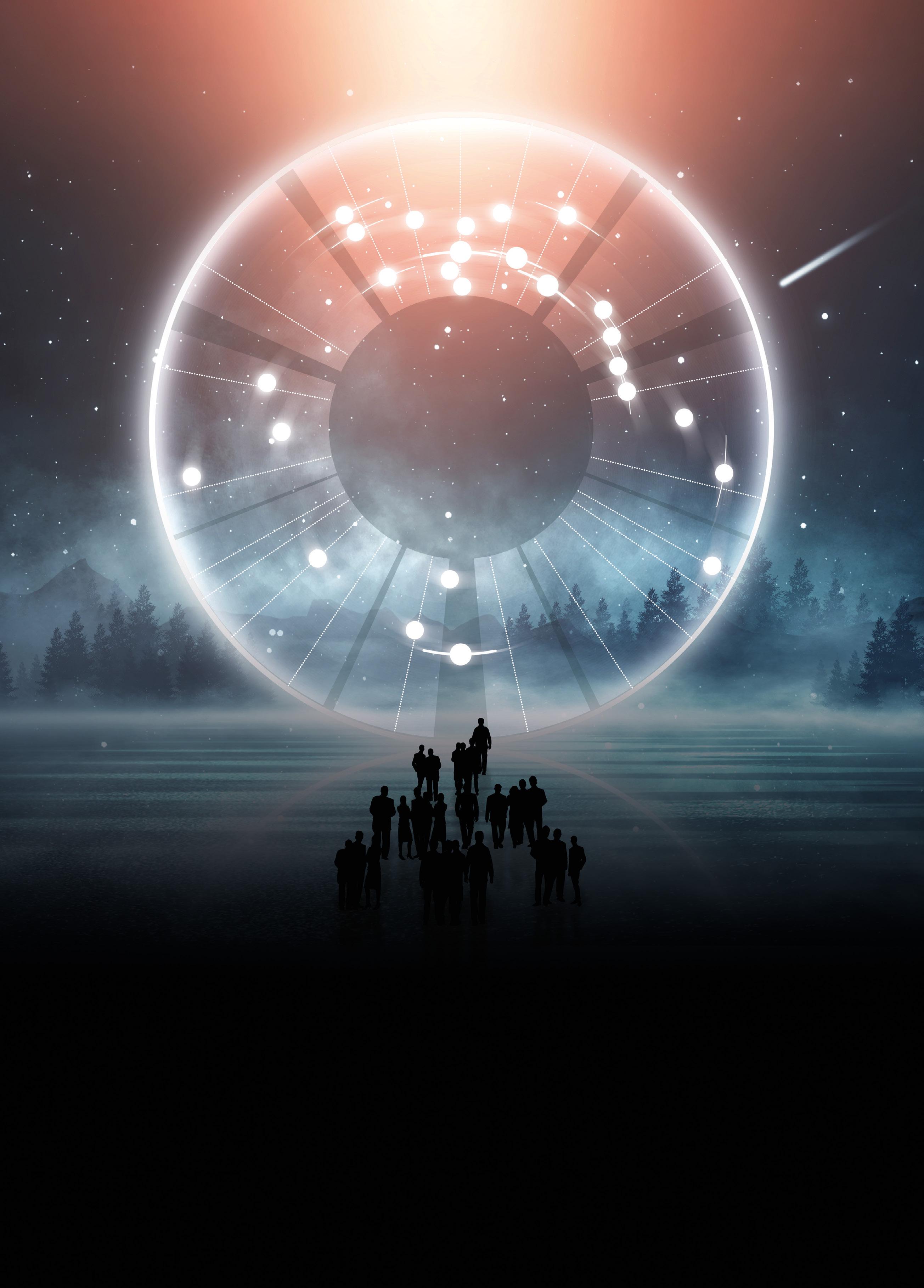
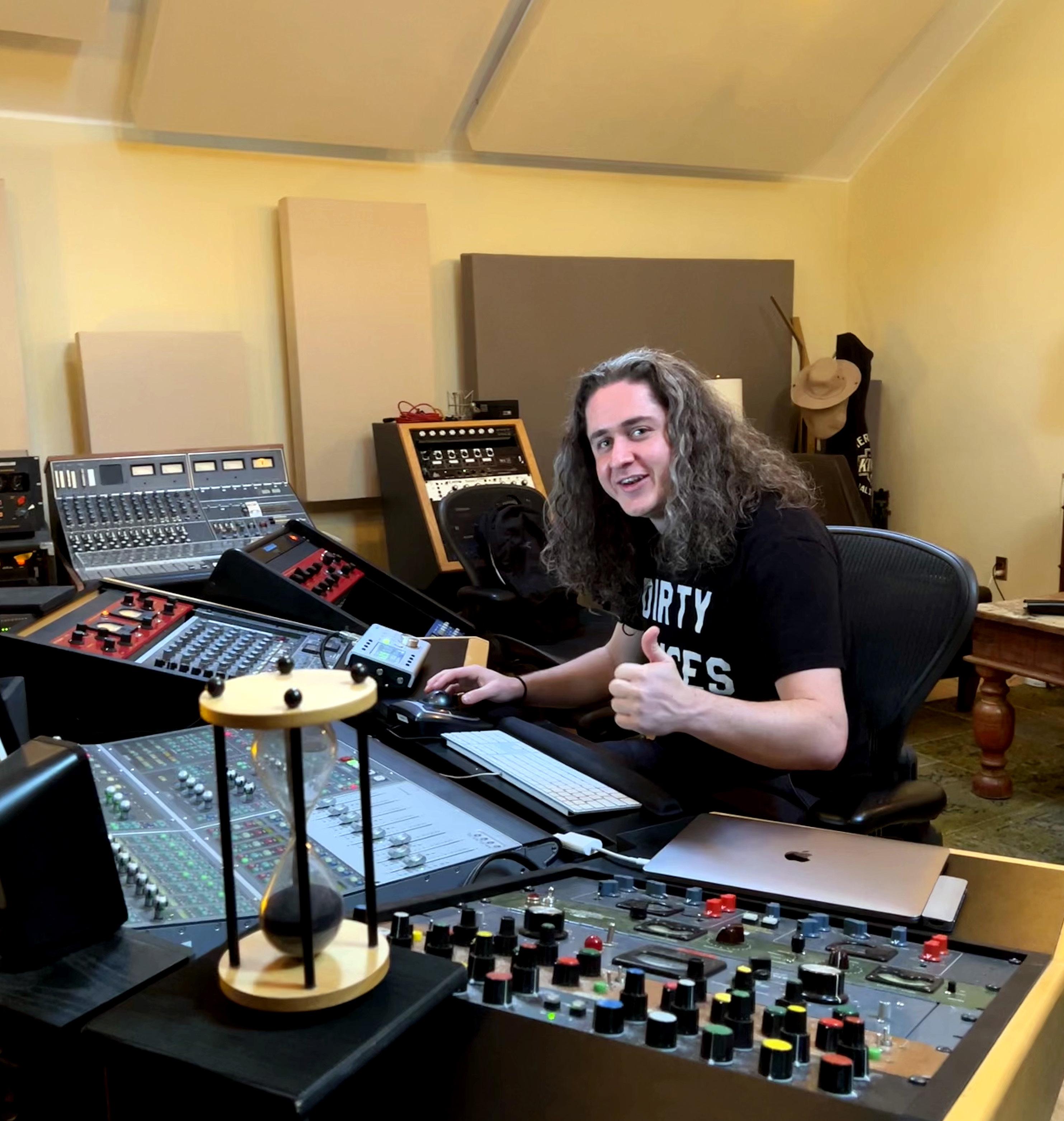 Words by adam pr o zt
Words by adam pr o zt
Miles Comaskey is a producer, mixing engineer and songwriter who, fresh out of college, found himself working for Tony Maserati, one the industry’s biggest legends in mixing. He’s also one half of Gold Glove, his The Prodigy-inspired music project. He tells Headliner about nearly being fired for wearing cut-off jeans on his first day working for Maserati, working with Pussy Riot, and how Waves plugins fit into the equation.
Comaskey’s career so far has seen him work with Selena Gomez, Gwen Stefani and Carly Rae Jepsen as some of the biggest names in a glittering career, but he is the first to admit that if it weren’t for getting the chance to intern with and then work for the Grammy-winning Tony Maserati (Beyoncé, Jason Mraz), he wouldn’t have these kinds of credits to his name.
“I was failing all my biophysics classes at college,” Comaskey says. “So I swapped over to studying music production. I would make beats for rappers in Philadelphia. When I
graduated, I got Tony Maserati’s email and contacted him about 20 times. He finally responded and offered me an internship, and I dropped everything in Philly and moved to L.A.
“I learned very quickly that I knew nothing. I thought I knew a bunch of shit. I didn’t even know how to use Pro Tools, really. I turned up fresh from the Philly hip-hop scene in cut-off jean shorts and some stupid t-shirt – Tony had Alicia Keys in that day and said, ‘If you ever turn up for work like this again, you can’t come back!’ When the internship was ending, one of his assistants quit. So Tony gave me the opportunity to be his assistant, and I got to work with him for six years, which I feel so fortunate for. He’s a great teacher, and a great mentor.”
Since going it alone as a mix engineer, one of Comaskey’s favourite projects has been working with the Russian feminist protest band Pussy Riot, whose activism against Vladimir Putin has seen them spend extended periods in Russian prison.

“Nadya [Tolokonnikova] is incredible. She’s like a superhero. Me and Owen Hobson, my production partner produced Hate Fuck, and produced and mixed a few other tracks on the Matriarchy Now album. It was an incredible experience.”
Comaskey gets a similarly warm feeling whenever he reflects on one of his longest-term working relationships, with American emcee Big Freedia. “Working with Freedia is so much fun. Because there are no rules really. We’ll just be blasting music through the speakers and give her an SM57 and say, ‘go!’ Recording with her is like a crazy block party.”
To call Comaskey an engineer only paints half the picture; he’s also onehalf of Gold Glove, who used their Pussy Riot contact to remix Toxic for the Russian collective, and have also released two singles.
“Me and Owen (Hobson) didn’t like each other back in the day, because we were both making beats in Philly for rappers and saw each other as competition,” he laughs. “But then we met and realised we should just make stuff together! Besides doing loads of production together, we had all these songs we made together which I sing on, but we couldn’t pitch them to anyone, because they’re too alternative and a little emo. Releasing them has been so much fun.”
Comaskey is a long-term user of Waves plugins, which almost landed him in hot water with his mentor, Mr Maserati. “Back in college, everyone had cracked Waves plugins,” he says. “I was constantly using Waves. When I first showed up to one of Tony’s sessions, he asked if I had his signature series, and I said, ‘I do, the cracked ones!’ This was before I knew what I was doing. I was throwing on the signature series guitar plugins on random things, and that’s what I like about Waves. It’s super intuitive. Because if you’re
a beginner, you really can just throw their plugins on and you will achieve some cool sounds without having to think too much about it.”
And while it was surreal to go from using the Maserati Signature Collection to having the man himself as a mentor in the flesh, “it was so cool because I could see why he made these plugins and what he was trying to replicate. I like all of the Waves Signature stuff – I love the Jack Joseph Puig ones, which have a ‘magic button’. I don’t know what that means, but it sounds cool! [laughs]”
Like many mix engineers, Comaskey certainly has a set of go-tos from the Waves selection. “I use their
Doubler all the time,” he says. “You can do some great augmentedpitched vocals with it. I do a lot of vocal chops, so the Doubler gets used a tonne for that. And it’s generally great for getting some width and depth when I’m mixing. I’ll even use it as a send, to add some dimension to a lead synth. And I always use the API EQs on drums, especially snares. I really like the top end with those. It’s not too drastic, just a nice little crisp touch.”
Comaskey feels alone in that “everyone seems to use Antares Autotune. I don’t like it! I’ve come across a lot of issues where it won’t recall correctly, or will just stop tuning completely. I’ve never had
any issues with Waves Tune RealTime. And I love that I can track with it too. I love those new BB Tubes plugins from Waves, they are awesome also. You can get some solid saturation from those.”
When Headliner asks how the rest of the year is looking for Comaskey, he simply replies, “Big Freedia! 2023 is gonna be Big Freedia’s year. I’m not sure how much I can talk about it, but I have a lot of stuff coming out with her and it’s incredible.”
WAVES.COM
“THAT’S WHAT I LIKE ABOUT WAVES. IT’S SUPER INTUITIVE.”



FOH engineer and system designer Simon Honywill has spoken to Headliner about designing the audio system for the Pyramid Stage at Glastonbury – as well as three of its other stages – and how the Martin Audio system at their core continues to defy what many deem possible in the world of festival sound.
A veteran of the live production market, Honywill has applied his signature touch to a wide range of tours and events down the years. To date he has served in FOH capacities for the likes of Chris Rea, Goldfrapp, Katherine Jenkins and Jeff Wayne’s The War of the Worlds to name a mere few, while his role as chief
audio system designer at Glastonbury is one that he has held for more than a decade now. In addition to the Pyramid Stage, his remit also extends to the West Holts stage and two of Block 9’s dance stages.
At the time of our conversation, he is working at Henley-on-Thames at the annual Henley Festival, where he has kindly retired to his car to join us via Zoom for a chat about all things Glastonbury. And while Worthy Farm may well be in the rear-view mirror, he’s currently feeling the impact of a jam-packed summer season.
“I’m knackered,” he exhales when asked how he’s bearing up. “I’ve been doing this festival since 1993. The site is highly aesthetic with lots of structure and art, there is a stage built in a river, we’ve had Westlife, Chic, Rag N’ Bone Man, and we have a bunch of other stages that are smaller, but it’s a really eclectic mix of stuff going on, from dance music to an emerging talent stage, which has been really interesting.”
Like most festivals, however, it pales next to the seemingly endless expanse that is Glastonbury. Drawing over 200,000 festival-goers, it appeared, as it seems to be every year, to be a record-breaking outing, with regard to both audiences in the Pilton countryside and those enjoying the festivities from the comfort of their sofas.
Festival closer Elton John, headlining the Pyramid Stage on Sunday night, attracted what certainly appeared to
be one of, if not the biggest Pyramid Stage crowds the festival has ever seen, as he marked his last ever UK performance with a set for the ages.
Fellow Glastonbury headliners Arctic Monkeys and Guns N’ Roses, as well as a raft of other stellar acts including the likes of Foo Fighters aka ‘The ChurnUps’, Royal Blood, Lizzo, Lewis Capaldi, Queens of the Stone Age, Rick Astley, Blondie, The Pretenders, Cat Stevens, Young Fathers, Hot Chip, Lana Del Rey, and many more also ensured highest ever viewing figures across the BBC’s live coverage and on demand content via iPlayer and the BBC Sounds app.
Indeed, Glastonbury 2023 shattered previous digital audience records for viewing and listening on the BBC - with content streamed a record 50.3m times across BBC iPlayer and BBC Sounds to date – up 47% on 2022.

On BBC iPlayer, viewers streamed sets and Glastonbury programming from Worthy Farm a record 47.5 million times, up 49% on the year before. And on BBC Sounds, listeners played Glastonbury content 2.8m times, up 26% on the previous year.
“It was a pretty epic year; it has to be said,” reflects Honywill, as he provides a walkthrough of his core duties at this year’s festival. “I was responsible for the system design across four stages – the Pyramid Stage, West Holts, and two dance stages in Block 9. Of course, the one everyone wants to know about is the Pyramid Stage. The festival
must like the Pyramid Stage design because they’ve gone as far as giving us permanent infrastructure to cable it with, which is something that the farm crew absolutely hate but the festival crew love! I was spending time across all four stages, but primarily I was working alongside Martin Connolly, the system engineer on the Pyramid Stage. The other stages, once we’ve gone in and established them and everyone is happy, tend to look after themselves. It’s all about the quality of the crew.
“Primarily it’s about finding a system topography that fits the slightly unusual shape of the field,” Honywill explains on what it is about the system design for the Pyramid Stage that works so well. “It’s almost like a rhombus with the stage at one end. Whilst that is fine for loudspeakers covering the first part, it then gets narrow at the top. So, the system has evolved from back in 2008 when we first used Martin Audio Longbow. It’s 350m from the downstage centre to the tip of the field at the back.
“One of the biggest considerations is how far away you can put a delay position with its primary source still being effective and the delay being able to take over seamlessly. And it’s also been approached with the advantage of using MLA and WP (Wavefront Precision) systems from Martin Audio, which are massively effective at being able to deliver coverage that other systems can’t, as well as being able to control what spills out the back of the arena.”

For Honywill, the Martin Audio systems have been pivotal in delivering the best possible audio to the Pyramid.
“The fundamental thing is that the MLA technology is all about what’s arriving at the audience’s ears, not what’s coming out of the loudspeaker,” he elaborates. “When you combine that with Martin Audio’s approach to design you have something really special. So we are able to manipulate very precisely the sound pressure level across the coverage of an array and use that to knit the whole system together. And we can use the patented Hard Avoid technology to control the
audio in ways some people don’t realise is possible.
“The system was four hangs of MLA across the stage and then four delays on the first ring, which were MLA and MLA Compacts, and the last row of delays was WPL. We were actually switching the Hard Avoid on and off on the back set of delays, and we could see the offsite metering changing by about four or five dB in real time, so this is something that actually works and is really powerful. It’s why the system is so successful in these situations, and it also sounds amazing.
“Like any system, it has its quirks, but knowing what’s achievable and that it does what it’s supposed to do is great, and it’s something which no other system does,” he concludes. “And it sounds great, it’s so fantastically musical. In this day and age that gets forgotten about. I want to express myself and my work, and I know I can achieve results with Martin Audio that I can’t achieve with any other system. That still interests and excites me.”
MARTINAUDIO.COM
“MLA TECHNOLOGY IS ALL ABOUT WHAT’S ARRIVING AT THE AUDIENCE’S EARS, NOT WHAT’S COMING OUT OF THE LOUDSPEAKER.”






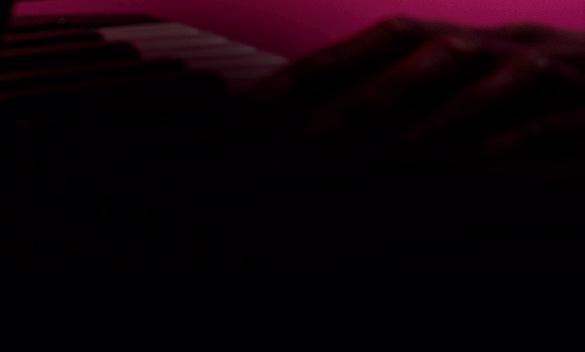






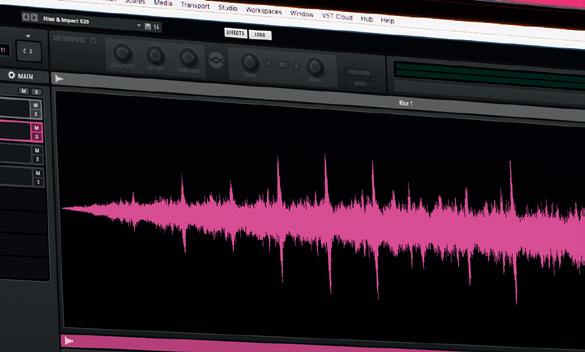





A revolutionary way to design your own drums – Backbone is your new, innovative drum designer for single kicks, snares, hi-hats, percussion, rises, hits and more. Layer up to eight samples and shape them with classic subtractive synthesis, decompose samples into tonal and noise elements and re-synthesize samples to manipulate them in unheard ways.






steinberg.net/backbone




Phillip Schulz is a man of passion and when he talks about his work, you certainly know that. Starting as an orchestral double bass player, he was seduced by the recording and production side about 20 years ago and this has been his life since then. It is rather unusual to discover somebody as comfortable producing and recording classical music as mixing music for film in 5.1. Over the last two years or so, nearly all music productions demand an Atmos version.
Additionally, the rush to generate Atmos content also provides mixing and mastering work for existing stereo recordings. Remixing stereo stems to 7.1.4 is not that simple but the results can be very rewarding.
His music recording is a complete Merging Technologies set-up, but any film projects are usually supplied as Pro Tools sessions, so his studio needs to work with both. Very fortunately, he can switch quite easily since he uses the same RAVENNA infrastructure from Merging for both the Pyramix and Pro Tools rigs. This improved his
workflow to the extent that he could sell his HDX system and now uses Pro Tools Ultimate connected to the Anubis and Hapi converters he has in the studio.
His sessions start in halls and venues of varying sizes, and he takes two Pyramix Native sets on the road with 48 channels of Hapi and an Anubis.
“The Hapi units can be positioned on the floor, on the stage or even in the roof and can be expanded and contracted to fit the size of the project, but the ability to connect the
whole system via Cat 6 cables has proven to be such an advantage,” he explains. “RAVENNA has probably been the biggest game-changer of my career, and one of the best investments, since my original Hapis are 10 years old now. The flexibility and ease of connection on location and the simplicity of changing the DAW in my studio has improved my situation so much. It is also so simple to add a back-up recording device to the network. Regardless of the software, any computer with an Ethernet connection can simply plug into the switch.”
The other device that has dramatically improved life on the road and at home is Merging’s Anubis. With different delivery formats to consider, being able to switch monitor sets and headphone balances with a touch of a button has been a huge bonus. A footswitch connected to the Anubis caters for the talkback and his whole network can be controlled by Anubis. Setting up the session requires initially monitoring on his Neumann KH120 or KH80 speakers and then most of the session will be listened to on headphones (Sennheiser HD600).

“The other more recent revolution is the addition of Sound ID Reference to the Anubis,” he says. “On location,
the listening rooms can be very compromised and being able to remove the worst acoustic artifacts is brilliant, and now SoundID is Atmos capable, I can tune my studio as well. It is a really great solution.”
All the gear in his studio is permanently set up with a MassCore Pyramix computer and Anubis and Hapi handling the monitoring channels. His main three PMC IB2S monitors are a legacy from the 5.1 days but the remaining 7.1.4 speakers are a mixture of Neumann KH120 and KH80 for the ceiling plus a KH750 for the LFE. It is impractical to listen to Dolby Atmos on the session, so the return to the studio is where the magic happens.
Mixing and mastering reveals other situations where Pyramix offers some unique advantages, and these are complemented by the RAVENNA infrastructure. Multiple panning busses allow the simultaneous compilation of the stereo and the Atmos mix which saves a lot of time. Most of the editorial decisions need to be made based on the stereo mix because listening in Atmos at the label or the musicians’ home is not yet a practical reality. As the mixes are both in the same project on Pyramix, keeping the time alignment of the different versions is very easy and the same timecode on all versions ensures that all are in sync and any CD markers applied will be identical.

A monitoring challenge is becoming apparent. How can you simply listen to the Atmos mix, the stereo mix, the renderer output, the binaural, and some of these may not be on the same computer? MERGING+ANUBIS is the answer because, apart from it being a superb monitor controller, it can be programmed to have all these sources available with one button push. Since all the computers will be on the same network, it is easy to programme a button to switch to a different output.
The importance of positioning and setting up the monitors for Dolby Atmos cannot be underestimated. Discrepancies here can lose the immersive ambience of the mix and lead to false judgements to be made. Schulz was used to setting up the system manually in Anubis but this was rather time consuming. The addition of Sound ID Reference has changed all that, making the process far simpler and more accurate. It also offers many more EQ points. In an ideal world, all speakers in an Atmos room would be identical but this is not always possible. In Schulz’s case, the room size dictates that two different Neumann models are used, however, he still wants to retain the three faithful PMC units in the front. Being able to time align all these and set up precisely matched levels is vitally important and easily achieved.
Unlike in 5.1, the surround speakers are full range and likely to be used for an instrument, so making sure the balance is precise is ultra-critical. Anubis is indeed the “heart of everything” with its ability to control the monitor selection, the overall monitoring level, the RAVENNA network and setting up the individual loudspeakers in the bed.
A last insight into why Pyramix works so well for Schulz is best left to him to explain:
“I keep my recording as a single project and because I have multiple busses, I can export the CD master and the Atmos plus the 24bit/96kHz versions simultaneously, including the timecode. I have one set of markers for them all and Anubis allows me to monitor the reference master or any of the other outputs. The whole process is really streamlined and Pyramix is incredible for this. I love it.”
The move from 5.1 to Atmos was more of a natural progression than a revolution. It is significantly different and allows for some experimentation with the placement of performers and microphones and it is still of an age where some trial and error is the norm to create some satisfactory mixes. The Atmos community in Germany communicate regularly and compare notes on their individual techniques and tricks, as many of them are on a similar learning curve.
As Schulz says: “We are all getting used to the new immersive world and although we have used other formats, it is clear that Dolby Atmos is required by most labels. Even though it costs extra now, it is probably a good economy in the longer term rather than recreating the mix later. Maybe at some point we don’t even need the stereo mixes anymore.”
Until then, this busy studio will continue to provide what the musicians and labels require.
MERGING.COM
“THE WHOLE PROCESS IS REALLY STREAMLINED AND PYRAMIX IS INCREDIBLE FOR THIS. I LOVE IT.”


Rock of Ages is the definitive jukebox musical. Originating on Broadway, it opened to a packed house and rave reviews at Toronto’s Elgin Theatre on February 23. It has all the rock ’n’ roll staples: boy meets girl and earnest musicians versus greedy business villains, all set to a roster of ‘80s classics from the likes of Bon Jovi, Poison, Whitesnake, Starship – all played by a live band onstage.
Long before he found his calling as a sound designer, John Lott graduated from high school early and wound up in theatre school to “kill some time” before he felt he was grown-up enough to attend university. Killing time turned into a lifelong passion: he never left the industry. “I started
working in the theatre industry at 20,” he recalls with a smile. “In the early ’90s, sound designers were really a new concept. Mega-musicals were also new,” he points out. “I lucked into a job working on Forever Plaid, which was supposed to be a five-week run and turned into four years.”
In Canada, Lott represents Sound Associates, which is based in New York and is a go-to sound company for broadway. With the 2023 production of the musical underway, he reflects on jumping in the deep end when he was first brought on:
“Rock of Ages is now well and truly open and doing well, but getting it up and running was a whirlwind! It
was being put on by a brand-new production company called More Entertainment, and while I don’t want to say they had deep pockets, they were prepared to spend some money to get it right. The size of the project was overwhelming, and the show kept getting bigger because we kept adding more and more elements. It was fun, though,” he assures Headliner, “especially considering that Sound Associates worked the Toronto run of the show in 2010. The content is still equally entertaining to fans of this music, who are now in their 40s, 50s, and even 60s.”
When it came time to put his expertise into practice, Lott assembled a sound system that could handle lightning-speed changes and extreme dynamic range. For all things wireless, he chose Lectrosonics. The 42-channelplus system included a host of SSM transmitters on most cast members and an LT pack on guitar, Venue and Venue2 receiver frames with VRT modules, and the flexible Aspen DSP audio processing system serving as a monitor matrix.
Radio frequencies are coordinated using Wireless Designer software. Lott, who cut his teeth with several Andrew Lloyd Webber theatre productions, shares the unique challenges of sound for live musical theatre:

“Today’s theatre audiences expect to hear live-action cinema, with everything crystal clear and right in your face,” he explains. “For a movie or TV series, you can spend hours in post getting that exactly right. In theatre, you get maybe five kicks at the can before you have a public audience. Everything is real-time, and there are a lot of variables.
Certain cast members may be different on certain nights, or maybe someone over-sang the night before and they’re tired,” he explains. “So, the system needs to be able to make everything as consistent as possible from one performance to the next.”
On the mixing side, this means wringing every last drop of sceneby-scene programmability out of a modern digital console to accommodate “the entire state changing, sometimes 10 times in the course of a single song,” Lott explains. When it comes to wireless miking, the non-negotiables include impeccable audio fidelity, tenacious RF performance, and flawless frequency coordination.
“There are 42 channels of Lectro on the talent, plus two handheld mics, plus four sets of in-ear monitors, and then six channels of wireless comms,” says Lott. “There’s a whole 1,000-seat venue above us. Then there’s Harry Potter a couple of doors down using something like 100 frequencies. So, it’s pretty saturated.”
Wireless Designer is therefore invaluable for keeping every channel in its own lane. “We do a scan every day just to make sure no RF surprises have popped up,” explains Lott. “We keep a spare receiver so we can scan during the show without any chance of affecting the show.”
Engineers and crew also need to know the RF status of every cast member at all times, and listen in, which is where Aspen comes in.
“Aspen is an automated matrixing, routing, and DSP mixer-processor box,” says Lott. “We’re employing it as our onstage wireless monitoring rig. Using an iPad app, you can dial up cue mixes, individual mics or combinations, and so on. Headphones and displays are set up behind stage left and stage right for the backstage crew, so if a mic gets knocked out of place or someone’s SSM battery is low, they can fix it at the first opportunity.”
While Lott appreciates such workflow-easing features, he returns to the issue of the audience’s expectation of cinema-grade sound quality. Asked how the core pairing of SSM transmitters and Venue/ Venue2 receivers have performed, he only has good things to say:
“With the Lectro Digital Hybrid gear, you don’t hear that companding sort of ‘fight’ you get with many other brands. You don’t hear that the sound is being crushed down for purposes of transmission. That’s crucial. We have had no issues with transmission, reception, dropouts, crosstalk, or sound quality, even in the RF-saturated Toronto theatre district. We’ve been good as gold,” he smiles.



MAKING ATMOS MORE ACCESSIBLE

Will Bates and Lucy Alper are coowners of Fall On Your Sword, a rapidly growing production facility in Los Angeles. Bates, who focuses on scoring and composition, works predominantly out of the facility’s tracking and control rooms. Centred on an API 1608 console with an additional 16-channel expansion, these three rooms are stacked with rare, vintage instruments and outboard gear: a vintage Rhodes MkII, Super Continental, Farfisa, Mellotron M4000, Eventide H9000, and a Yamaha CP-70.
The studio has been on an upward trajectory since its inception in New York City. They recently called on Westlake Pro Design Services Group to retrofit their 7.1 surround room to 7.1.4 Dolby Atmos. An Avid S6 Large Format Console sits centre stage with an Avid MTRX Pro Tools | HD Interface, Avid Sync X Master Clock, Crown amps and JBL 10” Cinema Surround speakers completing the system.
The pair had been thinking about investing in immersive audio for almost a decade, having first heard Dolby Atmos at Sundance Film Festival in 2013.
“We had a movie at Sundance called I Origins that was the first movie at
Sundance to be played in Atmos,” says Bates. “Skywalker Sound had this Atmos grant where they picked one movie at Sundance and did a full immersive install at the Eckles Cinema — which is the big theatre in Park City — to showcase it. So I actually went to Skywalker and we mixed the film in Atmos. Of course, it was never played in Atmos again. But at the time, we were like, ‘All right, this is it. We should do this too’. I was just dazzled by the experience of mixing music in Atmos.”
Upon returning to New York, they started to explore the idea of installing a Dolby Atmos mixing room in their facility. However, their excitement dipped when they saw the price tag: at the time, the minimum barrier-to-entry was easily $100,000. Instead, they completed two new surround sound rooms and ran wire through the ceiling for potential height speakers in the future.

Several years later they moved their entire facility across the country to Los Angeles and began to doubt their earlier predictions.
“We thought, ‘It’s never going to take off. It’s just never going to happen,’” Bates recalls. “So, we didn’t run cable for ceiling speakers this time. We made that mistake once before.”
Then they received a call from Netflix: every project moving forward will require Dolby Atmos as a deliverable.
“Music has been the bulk of our business to be honest,” Bates continues. “But we slowly got back into the mixing world after finishing our space here and the first couple of things that we’ve done have been more standard festival deliverables. Then because of doing those jobs, we got a Netflix project — and they, of course, needed it to be delivered in Atmos. And they needed it in six weeks.”
With companies like Netflix, Warner Brothers and others making Dolby Atmos a required deliverable format, immersive studio design has become more attainable for commercial studios and independent mixers than it used to be. The price of required equipment has fallen, and Dolby no longer requires an expensive certification. Still, the design and integration process is still a mystery for most.
There is a lack of standardisation across various niches of the industry, best practices change frequently, and no one seems to know whether Dolby even offers certification at all anymore. (They do, but it’s mostly just a way to be listed on their website as an approved mixer).
Faced with the prospect of working this out and installing the system in just six weeks (while running a successful studio), Bates and Alper decided to call in some help.
Westlake Pro’s Stephen Bannister and the Design Services Group designed a system based on the existing surround sound room.
“We knew that we needed something that could expand on our existing 7.1 system without replacing everything,” Alper says. “And we had just upgraded all of our computers to ‘cheese graters’ [newer Mac Pro computers], which cost quite a bit of money. So cost was a concern.”
After studying the system, Westlake’s Design Services Group noted that
the older ‘trash can’ Mac Pros that replaced the cheese graters could be repurposed for the new Atmos system.
“A lot of people don’t realise how efficient Atmos mixing has got over the past five or six years,” Tim Lawrence notes. “It used to cost a lot of money to get two computers that could handle Pro Tools and Dolby’s RMU separately. A few years ago Dolby released an update that would allow Mac Minis to handle the RMU, and now some smaller studios can even get away with running everything off a single machine.”
With a plan in place, most of the difficulty with meeting Netflix’s deadline came down to actually finding some of the gear.
“As most people are aware, product availability has been all over the place for the past few years,” Bannister says. “Six weeks is not a lot of time to account for working through supply chain issues, so I started working down the gear list right away.”
Bates says: “There were so many pieces where Stephen was a little like, ‘Ooh. I don’t know if we’re gonna be able to find that one. I know there’s none available.’ And then he would call me a couple weeks later and have scrounged one up somehow.”
“A LOT OF PEOPLE DON’T REALISE HOW EFFICIENT ATMOS MIXING HAS GOT OVER THE PAST FIVE OR SIX YEARS.”
As gear was sourced, the design team cut into the acoustic fabric on the ceiling and framed openings for the height speakers to be mounted. After everything was installed, Bannister worked with Dolby to align the speakers and tune the room. Within six weeks of the first meeting, Fall On Your Sword was ready to begin mixing in Dolby Atmos.
“If there’s one piece of advice I could give to other studios who are on the fence about upgrading to Atmos, it’s that it’s now attainable for all of us,” Bates says. “Don’t be afraid! Your project will sound incredible and it’s an easy add-on to offer if you’re already doing a lot of the
work for a particular filmmaker or media company. You hear so much about how it will be really expensive, or really complicated, and we were pleasantly surprised with just how simple the whole process was.”
With Fall On Your Sword’s unique collection of analogue synthesisers and acoustic instruments, the possibilities for sound design in immersive format present a lot of exciting possibilities. Alongside their own projects, the co-owners have opened up the studio to other mixers who need a place to work in Atmos.
Overall, Bates and Alper’s experience is a great example of

the growing scalability of Dolby Atmos mixing systems. Thanks to the innovations of Dolby and other manufacturers, integrators like Westlake Pro can put together rooms like this one with few hiccups and at a fraction of what it cost even a few short years ago. Easier yet, the simplest setups can now be achieved with a single Thunderbolt interface, a Mac Mini, some speakers and a little know-how.
FALLONYOURSWORD.COM
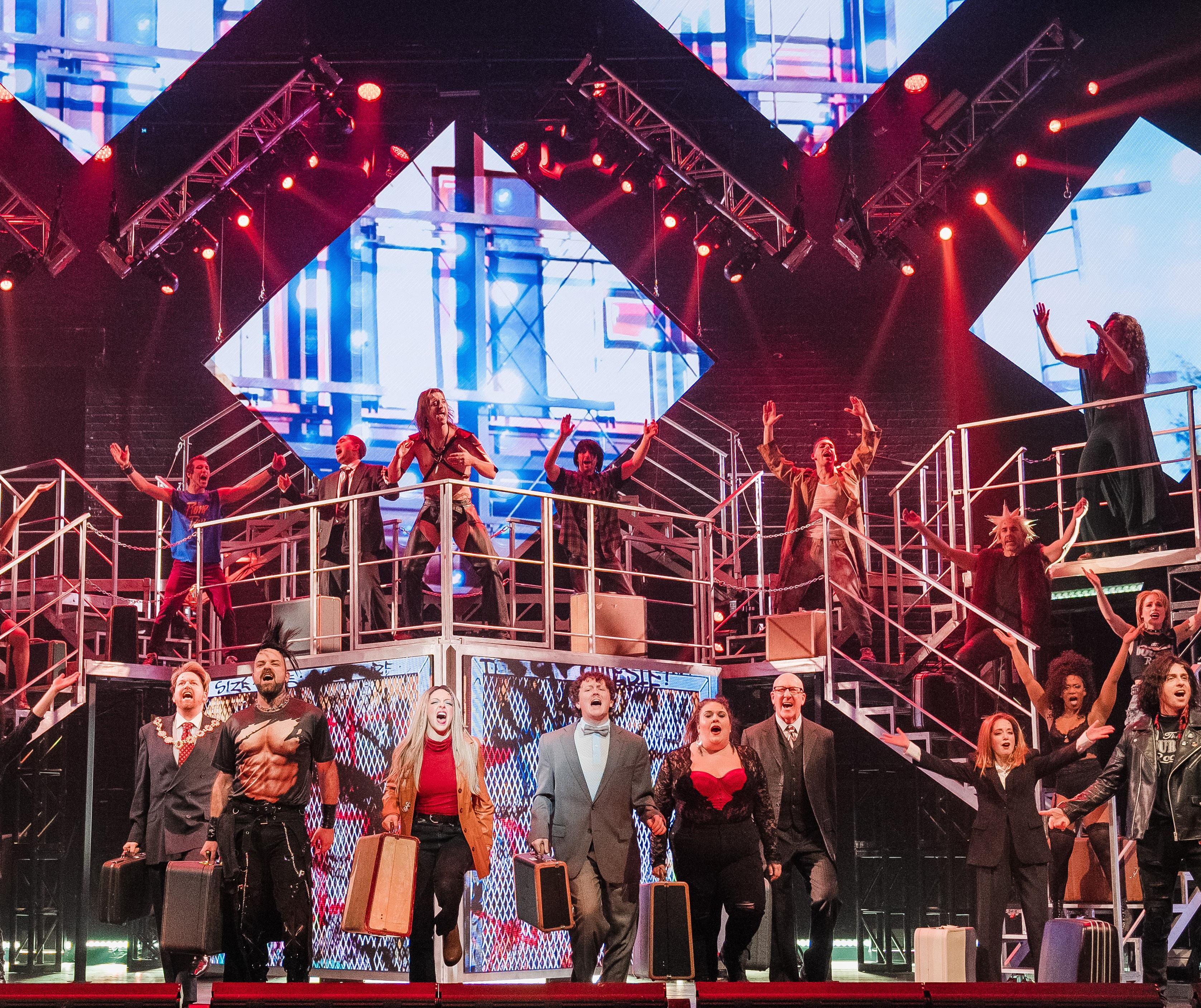
The 23rd Amadeus Austrian Music Awards were recently held in Karlsbad, Germany, using a GLP lighting system…
Lighting designer Manfred Nikitser and his team overcame technical lighting challenges at the historic Volkstheater in Vienna using GLP lighting equipment, including FUSION X-PAR 12 Z, impression S350, impression X5 and impression FR10 Bars.
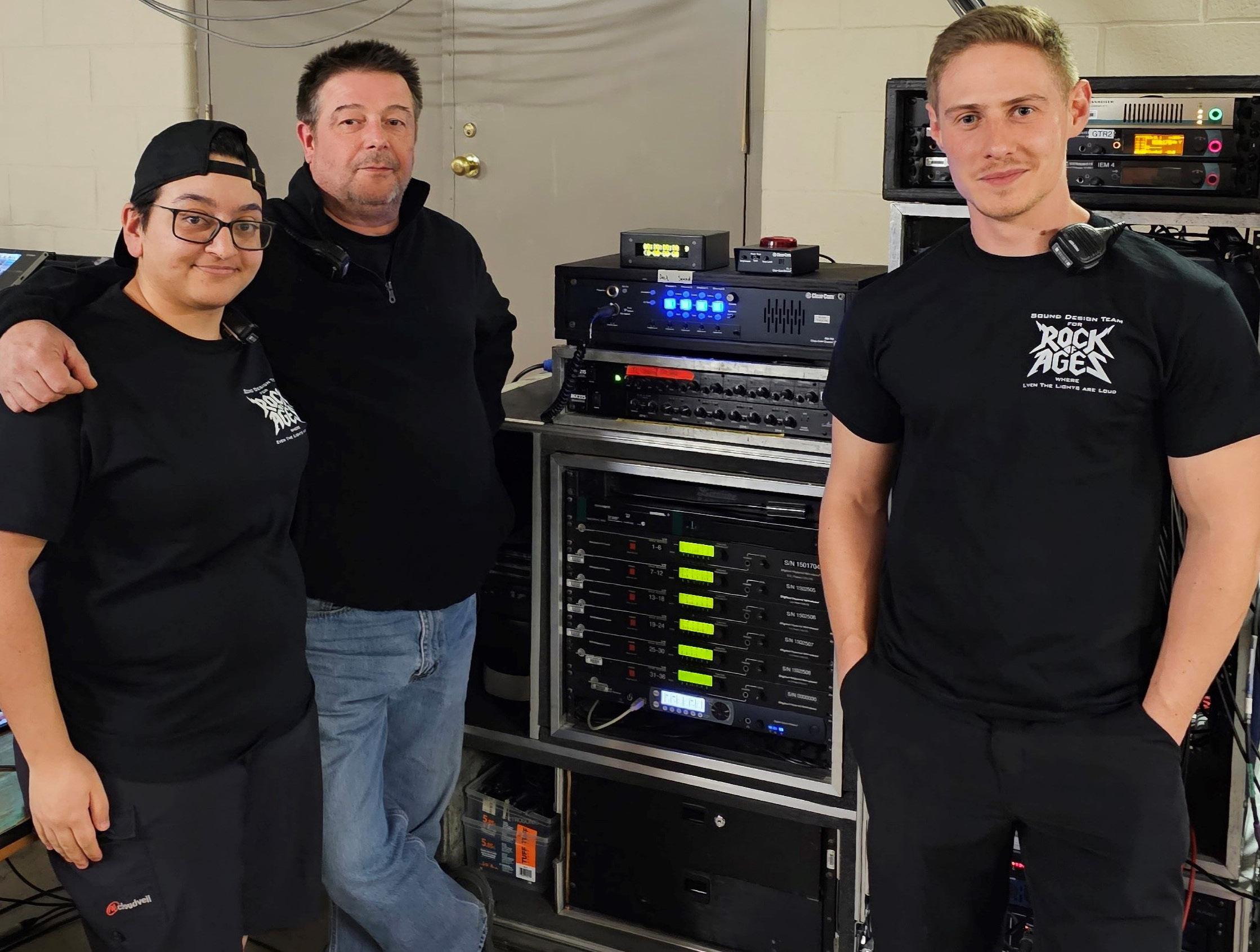
Nikitser, who has previous experience with the Amadeus Awards, worked alongside director Lukas Dudzik from Better Images to create the lighting design and production for the ceremony and show acts.
“We used Vienna’s oldest backdrop as a stage design, modernised it a bit and provided it with an entrance tunnel typical of award shows,” Nikitser says. “The design, which we largely adopted from the previous year, is a mixture
of a classic-historical and LED-heavy modern look.”
In a traditional stage arrangement for the award ceremony, a shortage of hanging points posed a problem. To address this issue, 40 FUSION X-PAR 12 Z lights were strategically installed using pipes, allowing for versatile placement. These compact LED PARs served dual purposes: providing classic TV spotlights and enhancing the spatial depth of the room. They were utilised in the award area as well as in the hall on two levels, serving as both creative ambient lighting and functional public lighting.
“Initially I thought of a classic LED PAR for this purpose,” Nikitser says. “However, thanks to the 190mm front lens, the FUSION X-PAR 12 Z is visually better perceived and creates more presence in the overall picture. That’s why I chose it.”
To address the limited hanging point situation, 12 GLP impression S350 Spot and two S350 Wash lights were suggested and chosen by Nikitser. The compact and elegant S350 Spots were utilised as front lights for the audience, offering the desired visibility in camera shots and TV-appropriate lighting quality. Additionally, impression X5 washlights, totaling 26 units, were employed to capture the unique ambiance of the Viennese Volkstheater and enhance the lighting design for each individual performance on the show stage, which was surrounded by a large LED banner.
“We chose the X5 for the show area because we needed a spotlight with a clear beam structure despite the surrounding LED band. Of course, the X5’s very high-quality lighting doesn’t hurt either,” Nikitser notes. With two additional impression X5s, Nikitser was able to paint the ceiling in the hall in an appealing way for the cameras.
To ensure a dynamic flow between show acts within the confined space, the production team utilised a previously developed moving platform, often referred to as a ‘flying carpet,’ which was also used in the Amadeus 2022 production.
“This ‘flying carpet’ enabled us to bring the performance from the back of the stage to the front, very close to the audience and then very quickly return to the award situation,” Nikitser explains.
Six GLP impression FR10 Bars completed the optical array at the front edge of the ‘flying carpet’. “Thanks to the large lenses and the consequent very strong visual presence – as well as their continuous line characteristic – the FR10 Bars are perfect on the roller platform,” he points out.
All in all, reaching into the GLP portfolio helped to overcome a number of hurdles on this project, as Nikitser enthuses: “It’s not just about the devices, which in terms
of form factor, output and light quality fitted perfectly into this scenario. Due to the ongoing theatre operations, the schedule for this production is always very tight, so it is a challenge to implement the show really well in a short time. This requires good preparation, strong partners and reliable technology. At this point many thanks to Oliver Schwendke at GLP, who always pulls out all the stops to support us. At GLP, I know from experience that I will not have any unpleasant surprises with the lighting – and that helps a lot!”
GLP.DE
“THIS ‘FLYING CARPET’ ENABLED US TO BRING THE PERFORMANCE FROM THE BACK OF THE STAGE TO THE FRONT.”
WHETHER YOU CHOOSE ANALOGUE, USB OR ADAT, OR UPGRADE TO THE PIONEERING DANTE TECHNOLOGY AS YOUR STUDIO GROWS, IT'S ALL POSSIBLE WITH THE 1073OPX AND THE OPTIONAL DIGITAL CARDS.
DESIGNED AND CRAFTED IN THE UK BY NEVE® ENGINEERS

